 USN Fleet Submarines (1944-51): 80 planned, 51 cancelled, 29 Completed (service until the 1980s), 9 navies
USN Fleet Submarines (1944-51): 80 planned, 51 cancelled, 29 Completed (service until the 1980s), 9 naviesWW2 US submarines:
O class | R class | S class | T class | Barracuda class | USS Argonaut | Narwhal class | USS Dolphin | Cachalot class | Porpoise class | Salmon class | Sargo class | Tambor class | Mackerel class | Gato class | Balao class | Tench classThe Tench class were a second class of emergency wartime fleet submarines derived from the Gato/Balao, already itself a near-repeat of the Tambor class of 1941–1943. These mass-produced U.S. submarines accounted by far for most of the US submarine effort in wartime, destroyed not only much of the Japanese merchant marine but aslo of the Imperial Japanese Navy. The grand total for all three classes was of 237 combined, all named after aquatic creatures. Collectively their changed the face of the war in the Pacific. Postwar, the Tench class, last of the serie, which few saw significant WW2 action (one lost) made the bedrock of the “fleet snorkel” the cold war US submarine fleet and many seeing many more years of service after GUPPY conversions in other navies. Final chapter linking 1918 to the present day as far as US submarine development is concerned.
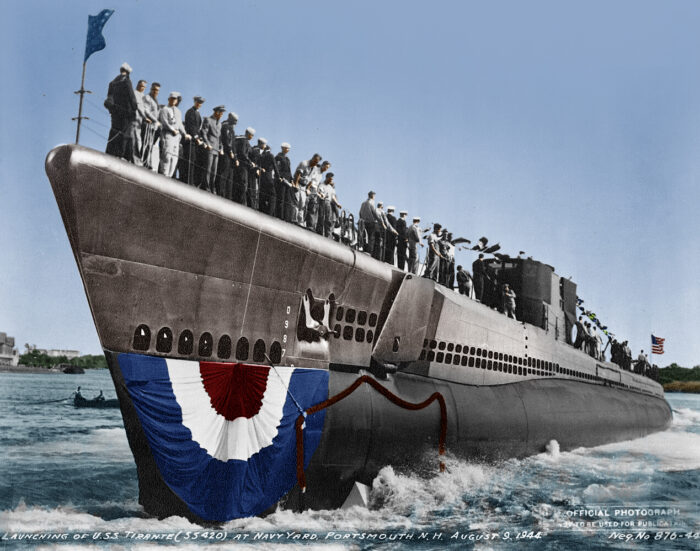
The launch of USS Tirante (SS 420), the most successful of the Tench class.
Development
1940 Emergency
Sinnce the Gato, Balao and Tench (in that order) were closely related, to study one it is necessary to study the start of this wartime lineage. In 1940, the situation in the Pacific rapidly degenerated, and by 1937 already, the Japanese aggression in China alarmed local colonial powers but also the US which had interests in the protectorate of Philippines and vulnerable islands such as Midway and Guam. War games showed that the US would be defeated in a pacific fighter with the IJN since most of its assets would be more probably on the east coast. This prompted a change in policy and in 1940 it was decided to move the bulk of the fleet to the Pacific at Pearl Harbor. Several months at the end of 1941, the USN was in quasi war with Germany on the Atlantic already, and rearmament plans were in full swing. Despite worries by Admiral King, CNO, Pdt. Roosevelt pushed for maintaining strenght in the Atlantic.
The Gato class was first planned initially as a successor to the Gar class (a sub-class of the Tambor) and only six boats were planned, like previous classes all tailored for Pacific operations. But the latter was appeared as a long-term prospect, far more distant than a war with Germany. By January 1940, the Gato class developement as a successor fleet submarine seems very promising, improving on already very good assets. USS Gato was ordered to Electric Boat in October, then USS Greenling and Grouper in November and December). Drum was even laid down earlier at Portsmouth NyD in Kittery, Maine in September, and USS Flying Fish in December. USS Gato still took the class lead as being immatriculated SS-212 when she launched on 21 August 1941 and completed on 31 December 1941. The fast construction in just a bit more than a year, denoted the sense of emergency as well as perfected yards process based on previous classes, which all were very close in design.
The calendar pressed tthings up however and when the Pearl Harbor attack on 7 December 1941 destroyed the Pacific Fleet, assets left became the carriers (too few to face the IJN), their escorts fleet of cruisers and destroyers, and of course, fleet subs. Immediately it was devised a plan to use them as scouts, shattering 20 years of submarine strategic doctrine. This was due to Cdr. Lockwood a pure submariner in opposition of the old guard advocating for submarines kept as a coastal defensive asset only and against these new long range fleet submarines. But Lockwood, despite being a junior commander, was supported by the majority of submariners and continued to advocate for the use of fleet boats to wage war close to Japanese shores and home waters. He continued to say they were superbly qualified for commerce raiding against the newly formed Japanese Empire.
So, from the the Six units initially planned FY41, the Two-Ocean Navy Act 48 brought 33 additional units, and all these keels were laid as soon as the yards could accomodate extra spaces for them. Mare Island Naval Shipyard in Vallejo was contracted to throw its own weight in the balance, opening a new serie of basins. Manitowoc Shipbuilding Company in Wisconsin also join in to make up for the numbers. They would produced 77 Gato class subs in 1942-43, last laid down in May 1943, completed in March 1944, with much standardization and simplifications piloted acros yards, new shared organizational streamlinings, laeding to a construction time for keel laying to commission below a year and down to nine months in some cases. This wa spushed harder for the next Balao class, of which 120 were built. An unprecedented effort.
Then came the Tench class. They came as a new class almost by accident. At the origin the need to solve a ballast pipes issue forced to redesign the entire ballast piping system, relocated or delete some, and completely rearranged internals, leading to incidentally two benefits: Extra fuel oil in newly found tanks, extra torpedoes, and solving a grave flooding-capable design weakness. As for the rest, they were virtually identical to the Balao class. They had short WW2 careers, making them highly desirable postwar for conversions.
Design
Design Genesis
The Tench class were a direct repeat of the Balao class, with reinforced welded hull and many improvements. Themselves were based on the Gato class which improved in turn on the 1939 Tambor class design (built 193-40). The Tambor has been the first truly successful fleet submarine with a surface speed of 21 knots (39 km/h) in reliable conditions. With 11,000 nautical miles, they could roam Japanese home waters and were promied a splendid “scret weapon”, the new Mark 14 that promised to exploded right below the keel of targeted ships with its magneic detonator, coupled with a brand new ballsitic computer for instant calculations. They had ten torpedo tubes, plus improved combat operations (all main operators under the the conning tower), a new fire control system with a ballistic computer and if close to perfection, the next Balao class pushed the envelope further and benefited from the start from a litany of improvements that were made on the Gatos over a year and half, namely changed in the conning tower, which was simplified. The deck gun was, when possible now a solid 5-in/25 gun and better AA than the early war liquid cooled 0.5 inches Browning MGs. More importantly, changes on hull construction meant they were now able to dive almost twoce deeper, making them far more survivable.
Differences between the Tench and Balao
Now to gain time, the next Tench class was largely a repeat of previous designs, but became an improvement over both the Gato and Balao, starting with a 35-40 tons in extra displacement, a hull even more strongly built and slightly improved internal layout. One of the ballast tanks for example, was converted to carry fuel and increasedg range from 11,000 to 16,000 nautical miles (30,000 km; 18,000 miles).
This was a new game changer, as it provided the Tench class the ability top operate straight to Japan from Pearl Harbor without intermediate stops. To put things into perspective, this was close to an Essex class carrier (20,000 nmi/37,000 km at 15 kn). So to make it simple and understand the trilogy:
The Gato class were an improved Tambor/Gar diving deeper. The Balao class had a massively improved hull to dive even deeper. The Tench cmass added to this massive extra range.
Improvements was also made and more came with SS-435, sometimes referred to as the sub-class “Corsair”. Initial plans called for eighty more subs, but 51 were cancelled in 1944-1945 when it was clear the situation in the Pacific has been reversed and the subs already present were enough to finish the job.
This was also the realization of how bad the IJN was prepared for Anti-submarine Warfare. The remaining 29 boats were commissioned between October 1944 for USS Tench and February 1951 for USS Grenadier. Indeed, mant of the last Tench class boats already saw little service in World War II, but most remained in service with the U.S. Navy long into the cold war. Most were converted to GUPPY types. The very last in service with the USN (those transferred to friendly nations and allies served for much longer) was USS Tigrone (AGSS-419), decommissioned on 27 June 1975. So they proved useful in two wars.
Externally for the casual observer, the Tench Boats varied little from the late Gato and Balao, in fact they were nearly indistinguishable but from details. The Gato class indeed went through many wartime modifications. Still a few features stand out:
The first batch of Gato class compared to their predecessors were stepper shears of the CT periscopes fairing, and twin fairlead (“bullnose”) at the prow.
Government’s boats had ring-type bull nose towing fairlead instead. There were also Eletric Boat’s style limber holes, plus the curved and then horizontal bulwark, and a superstructure ending short of the stern. Government boats were retrofitted with small limber holes as standard on all Gato and their successors.
The diesel-electric propulsion layout repeated that of the Balao class: Four truly excellent Fairbanks-Morse driving two low-speed double-armature direct-drive electric motors. All but Corsair received the Fairbanks-Morse 38D 8-1/8 engines, a new breed of 10 cylinders. USS Corsair was alone in having GM 16-278A engines.It was now the reliable General Motors Cleveland 2-stroke diesel engine. The direct-drive electric motors were improved, and made even much quieter with a rebuilt reduction gear arrangement. The drive train was also much more reliable, as the gearing was an element prone to shock damage from depth charges. This was completed by two 126-cell Sargo-type lead-acid batteries, probably the lest innovative element in the Tench class design. However an extra coating was painted on the inner pressure hull to better absorb potential cracks in the hull after depth-charging.
The Tench class also adressed a crucial design weakness of the previous boats: The benefited from a re-design of the ballast tank vent riser pipes. These usually passed through the interior of the boat, in the forward and after torpedo rooms. They allowed #1 and #7 Main Ballast Tanks located in the single hull sections to vent air during diving, enabling flooding from below when udnerwater. The tanks tops were formed an internal walking deck in both rooms and located vent valves on the top of the tank. The riser pipes enabled the tanks to vent, but when these tanks were full, these pipes contained water at full submergence pressure. If they ruptured in depth charge attack, this would result in a catastrophic flooding.
To solve this issue, engineers encountered many headaches to redesign the whole piping system in a tight space already, and this initially proved quite difficult. In the end this required a complete rearrangement of the ballast tanks instead of trying to making compromises. #1 MBT (Main Ballast Tank) was moved forward of the end of the pressure hull notably. This allowed it to vent directly into the superstructure like the others and this eliminated the riser pipes. #7 MBT was calculated for stability and buoyancy and found redundant. It was converted into a variable fuel oil/ballast tank.
So solving a grave safety weakness had an unseen benefit, inscreasing the Tench class’s surface range as well. These changes however forced a rearrangement of the piping runs and locations in most other tanks. Since this was internal, these changes made the Tench visually indistinguishable from the Balao class. With the single exception of a sharper angle, or knuckle at the lower corner of the bow, which was only visible when drydocked. Another difference was the elimination of small bulges around the motor room, previously accommodating the reduction gears.
The tank rearrangement also had an additional benefit than the extra range and extra safety: The internal space now enabled to carry four additional torpedoes in the forward torpedo room, making for a total of 28, a good complement piece with the extra range. In short, the Tench class could stay longer in operation than previous classes. This change was repeteadly asked previousy by submarine crews, but could not be accommodated due to the lack of space. The last change was a systematic installation of the 5-inch (127 mm)/25 caliber deck gun in place of everything else, a far better offensive weapon when dealing with small vessels while surfaced. Since it was the case in 1945, the few Tench class operational, by default of better targets, had most of their “kills” that way. War experience, commanded that change as well, and also additional anti-aircraft guns with a single 40mm Bofors and twin 20mm Oerlikon mounts, on the CT and deck. Indeed, the Japanese often escorted their convoys in 1944-45 with at least one of two aircraft, far better in spotting approaching submarines.
General Layout
The Tench Class were no more longer than the Balaos, a bit heavier at 1,570 tons (1,595 t) surfaced and from 2,416 to 2,429 tons (2,455–2468 t) submerged for an overall lenght of 311 ft 8 in or 311 ft 9 in (95 m), a beam of 27 ft 3 in – 27 ft 4 in (8.3 m) and a draft of 17 ft (5.2 m) maximum. To compare, the Balao class were 1,526 tons surface/2,391–2,424 tons submerged and around 1-2 inches shorter, for the same beam essentially, but a lower draft at 16 ft 10 in (5.13 m) maximum. The crew was 10 officers and 71 enlisted, just like previous boats.
The hull ended the extra same way as the Balao class, with a shorter upper deck. They had an enhanced internal subdivision for their compartments, and the hull durability was also improved, making the overall displacement grow to 35-40t more. The hull was just slightly ticker in places and overall the boat was more “packed”. From SS475 onwards (USS Argonaut) it was planned to give them the largest operational diving depth possible at 135 m (440 ft), with a maximum permissible of 225m (740 ft). But this was not implemented with the war end closer and not to disrupt production.
The general outlook of the conning tower corresponded to the last modifications performed on the Gatos and ported in four variants of the Balao, typically equivalent to the mod 4/Mod4a Gato, Same as the mod 3 (covered navigation bridge on the forward part of the fairwater cut away, plating around the periscope shears removed.) but with a lowered bridge to make for a more discreete silhouette. This exposed three I-beams on either side of the periscope shears, making this variant the “covered wagon boats”. It appeared by early 1944 and became standard for the completion of the Tench class. The Tench also came with a set of radars from the start and the CT was modified to bet accomodate them, taking two years of operations in account.
See the Gato class for much more detailed design.
Propulsion
The Tench class had four diesel engines, driving electrical generators. These were Fairbanks-Morse for all boats, but General Motors for Corsair only.
For underwater running, they had two 126-cell Sargo batteries driving two low-speed direct drive electric motors. Depending of the yard, they came from the Elliott Company, General Electric, or Westinghouse. In total this made for 5,400 shp (4,000 kW) surfaced and 2,740 shp (2,040 kW) submerged. The same figures as previous boats, so the the Tench were not faster.
Top speed was only “nominally” of 21 knots, but officially it was kept at 20.25 knots (38 km/h) surfaced and 8.75 knots (16 km/h) submerged, also like the previous class.
The range as now of 11,000 nautical miles (20,000 km) surfaced at 10 knots (19 km/h).
They had the same endurance underwater also of 48 hours at 2 knots (3.7 km/h) and could stay 75 days on patrol. Having the same new hull inaugurated by the Balao they could also dive to a test depth of 400 ft (120 m), compared to 300 ft (90 m) on the Gato class.
Kentucky senator Andrew Jackson May in the June 1943 “May Incident” indeed revealed deficiencies of Japanese depth-charge tactics in a press conference on his return from a war zone junket. Te leaked, highly sensitive fact exposed that Japanese DCs were too shallow in depth. This was widely published before the USN cracked down and of course picked up by Japanese agents that forwards it to the IJN, immediately taking action to have their depht charge with deeper settings and introducing the new type. Fortunately the deeper diving pacability of the Balao/Tench compensated for this but the Gato s becamle “at risk” and took more losses than the two classes, also due to their longer service.
Armament
The Gato/Balao/Tench would remained among the most heavily armed submarines of of WW2 underwater and surfaced. From a standard armament no better than a single 3-inches/50 deck gun (courtesy of Admiral Hart) with four 0.5-in HMG AA in twin liquid-coled Browning mounts, the Tench went for a standard 5-in/25 main gun mich heavier (and this needed to strenghten the deck, a design choice made with the Gatos already for wartime upgrades) as well as installing 20mm Oerlikon Anti-aircraft cannon and when the conning tower enabled it, one or even two 40mm Bofors Anti-aircraft cannon. With a standard 5-in gun aft or forward it was needed to preserve stability and balance. So the case of two Bofors on the CT was unlikely, most often the combo was a forward deck guns, a forward CT 20 mm and aft 40 mm. To boot if the needed arose, there was a locker with plenty of small arms, M3 Grease Gun, M1 Thompson and grenades for boarding actions of landing party on forgotten sandy outposts, and security. There were also often two extra M2 Browning 0.5 inches machine guns to boot and the crews often added extra pintle mounts for extra AA defence.
5-inch/25-caliber gun Mk17
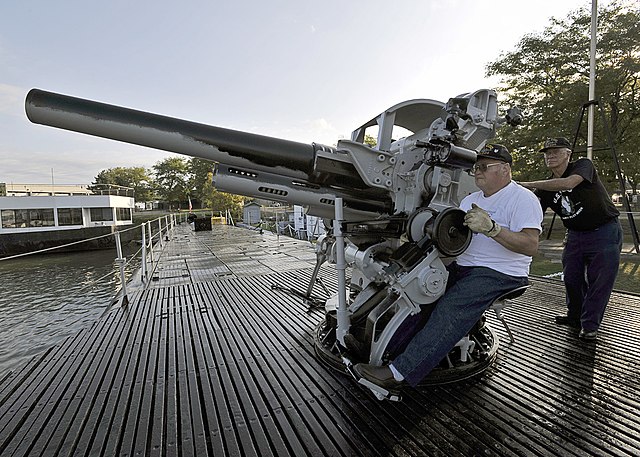
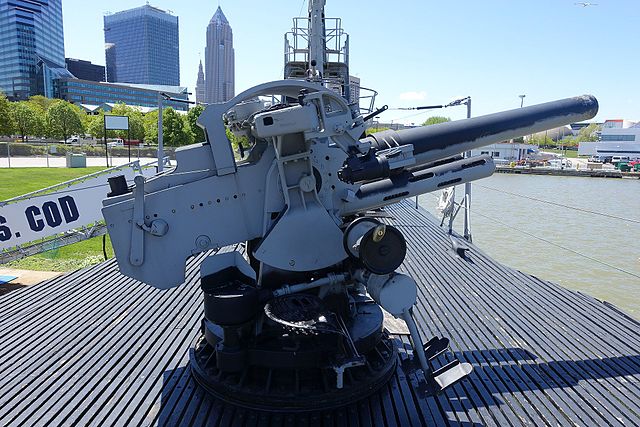
Installed when available from 1943, this ordnance started its career in the 1920s as a new 5″/25 AA gun before being declined in further variants, Mark 17 being the last of these, developed for submarines. It weighted 2 metric tons, used the Mark 40 submarine gun mount for semi-fixed ammunition (case and projectile handled separately), but existing WW II photographs and drawings of ammunition storage show fixed ammunition. Range was just of 14,500 yards (13,300 m) the same or inferior to the 3-in/4-in/50 guns due to the short barrel, at 40 degrees elevation which was manual as well as training. From august 1944 some Gato class received even two of these (additional one forward) assisted by the Mark 6 “Baby Ford” fire control computer with a Mark 6 stable element. Not on the Tambor. They kept their single aft gun all along.
⚙ specifications 5-in/25 Mark 17 |
|
| Weight | 2 metric tons |
| Barrel length | 11 ft 10 in (3.6 m) oa, Barrel 10 ft 5 in (3,175 mm) |
| Elevation/Traverse | -15/+40 degrees |
| Loading system | Manual, vertical sliding wedge type breech |
| Muzzle velocity | 2,100 ft/s (640 m/s) average |
| Range | 14,500 yards (13,300 m) at 40° (effective) |
| Guidance | Optical |
| Crew | 6 |
| Round | Fixed, 127 × 626 mm R 54.5 lb (24.7 kg) |
| Rate of Fire | 5 rounds per minute |
Mark 10 Torpedoes
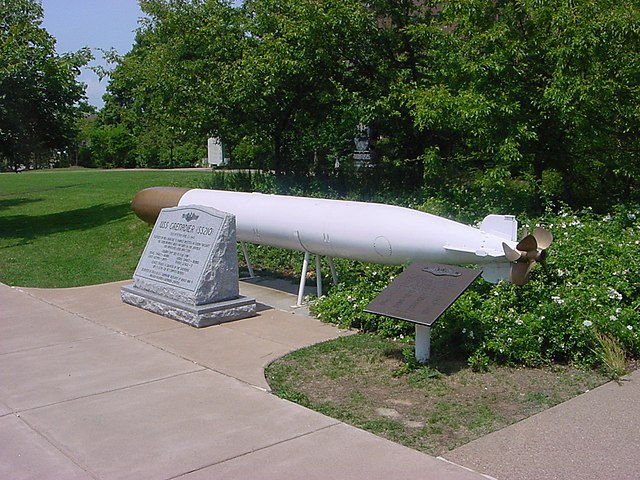
These boats were capable of firing the 21-inches Mark 10 21″ (53.3 cm) Mark 10, a 1917 design entering service in 1918. From 1927 these were the Mod 3, last designed by Bliss and manufactured by the Naval Torpedo Station at Newport. They equipped the WWI R and S boats, most V Boats, The Cachalot, Porpoise and Sargo, but were not intended for the Tambor class. They soldiered on in World War II still, as a trusted straight course in replacement for the infamous Mark 14. Before the latter had its defaults ironed out in 1942-43, the Mark 10 was in high demand and stocks starting to dwindle down rapidly. Thus, production was maintained until 1943. The Gato/Balao fell onto them as a backup before the Mark 14 were ironed out, but by the time the Tench entered service the new and improved Mark 14 and Mark 18 electric torpedoes were standard.
⚙ specifications Mark 10 Mod 3
Weight: 2,215 lbs. (1,005 kg)
Dimensions: 183 in (4.953 m)
Propulsion: Wet-heater
Range/speed setting: 3,500 yards (3,200 m) / 36 knots
Warhead: 497 lbs. (225 kg) TNT or 485 lbs. (220 kg) Torpex
Guidance: Mark 13 Mod 1 gyro
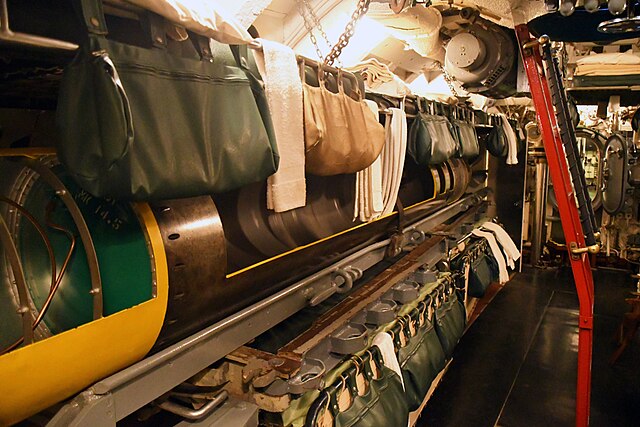

Mark 14 Torpedo
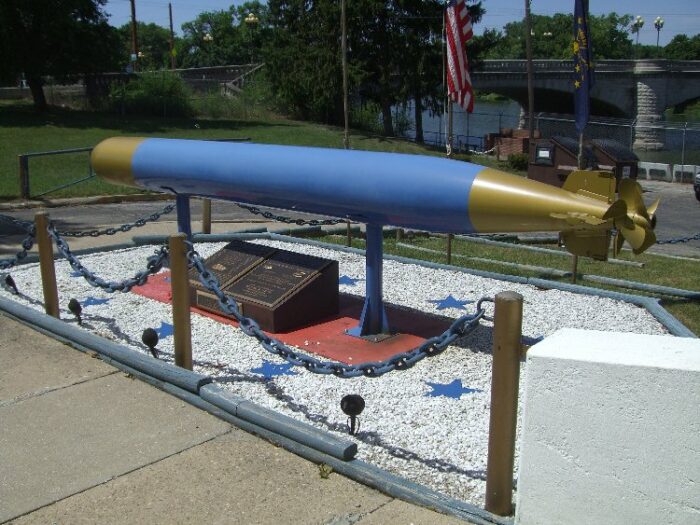
In 1941 she carried the Mark 14, entering service in 1930. Designed replacement for the Mark 10, this was the new standard. Unfortunately the model was infamous for its legendary unreliability, explaining the poor results obtained in 1942 and until mid to late 1943; Long story short, the Mark 14 was a revolutionary new model that was tailored to use a gryroscope combined with a magnetic pistol. The principle was not to detonate on impact, but use magnetoc proximity of the enemy hull to explode ideally under the hull of the target. This way, it was easier to break its hull instead of just making contact below the waterline. These torpedoes were designed at the Naval Torpedo Station Newport, Rhode Island from 1930 and considered state of the art, benefiting from a $143,000 budget for its development.
Production was pushed forward after testings, and at 20 ft 6 in (6.25 m), it was incompatible with older submarines’ 15 ft 3 in (4.65 m) torpedo tubes, like the R and O classes. It was also the best performer, capable of 4,500 yards (4.1 km) at 46 knots (85 km/h). Lots of promises, but the war proved that testings had not been thorough and the rate of misses compared to the Mark 10 became obvious in reports in 1942, this infuriated many captains that disabled the magnetic pistol, but did not solve the problem as it was proved later that their too fragile impact fuse was also faulty.
Responsibility lied with the Bureau of Ordnance, which specified an unrealistically rigid magnetic exploder sensitivity setting while not providing enough funding to a feeble testing program. BuOrd had a hard time later accepting it and enable a new serie of tests, which were mostly from private initiatives.
Only by late 1943 and early 1944 most problems had been allegedly fixed, so that the 1944 Mark 14 at least allowed captains to claim far more kills. The “mark 14 affair” sparkled a lot of controversy postwar and it’s not over.
Mark 14 issues:
The Gato like the Tambor class were of course given the promising new Mark 14 as standard when completed in 1940. They had an abysmal record and ushered in a storm of captain’s protestations in upper echelons, which coupled with the stubborness of the Ordnance delayed the issue to late 1942, mid-43, when their numerous issues were fixed. There were still stocks of the older, straight course contact fuse Mark 10 aplenty, which were “pillaged” every time they were available on forward deployment zones. The problem was that Mark 14s had been provisioned to the frontline, notably from Guam and Midway, so fustrated captains had to make due with these. Frustration amounted as detonations were often heard, but the warheads seldom exploded in a useful way, prematurely quite often or too low under the keel to do any damage and many alleged “kills” in 1942-43 were debunked postwar.
⚙ specifications Mark 14 TORPEDO
Weight: Mod 0: 3,000 lbs. (1,361 kg), Mod 3: 3,061 lbs. (1,388 kg)
Dimensions: 20 ft 6 in (6.248 m)
Propulsion: Wet-heater steam turbine
Range/speed setting: 4,500 yards (4,100 m)/46 knots, 9,000 yards (8,200 m)/31 knots or 30.5 knots
Warhead Mod 0: 507 lbs. (230 kg) TNT, Mod 3: 668 lbs. (303 kg) TPX
Guidance: Mark 12 Mod 3 gyro
Mark 18 Torpedo
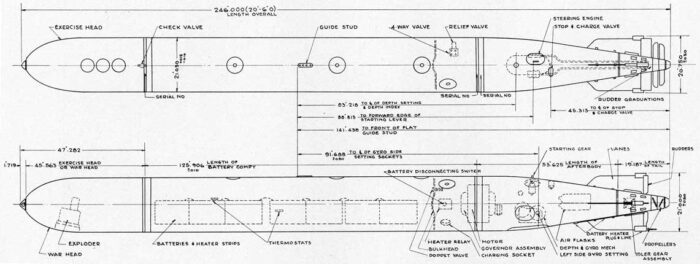
The Mark 18 was USN’s first electric torpedo, and as troublesome at its beginnings as was the Mark 14. They were developed after the German submariners “second happy times”, when firing on US merchant traffic in early 1942. Several G7e electric torpedoes ran ashore and were recuperated for study on order by Admiral King. BuOrd turned not to NTS or GE but Westinghouse for development, at first as a copy starting on 10 March 1942. Design was complete for tests by mid-April.
2000 were ordered and 2600 warheads, 500 being summy practice. They were scheduled for delivery by the summer 1942, but issues accumulated wit the new Exide batteries which overpromised and underperformed, producing dangerous hydrogen gas. Quality control was at fault. But Naval Torpedo Station (NTS), Newport was nof no help and the torpedo was improved by commanders such as Oliver G. Kirk (USS Lapon).
 But NTS all but blocked progress so much it ended on the desk of Admiral Lockwood, who rushed into William H. “Spike” Blandy, Chief of BuOrd’s office. After vivid explanations, added to the general discontent with the mark 14, the matter was settled and the Mark 18 prioritized. By late 1943, as it was already delivered for months, issues reported in droves, the most damming being a dangerous ciscular pattern in some cases (likely claiming USS Tang). It should be said that the orginal G7e itself was already problematic. But most issues were ironed out by late 1944. Still, the Mark 18 made only 30% of the torpedoes fired by US subs in WW2.
But NTS all but blocked progress so much it ended on the desk of Admiral Lockwood, who rushed into William H. “Spike” Blandy, Chief of BuOrd’s office. After vivid explanations, added to the general discontent with the mark 14, the matter was settled and the Mark 18 prioritized. By late 1943, as it was already delivered for months, issues reported in droves, the most damming being a dangerous ciscular pattern in some cases (likely claiming USS Tang). It should be said that the orginal G7e itself was already problematic. But most issues were ironed out by late 1944. Still, the Mark 18 made only 30% of the torpedoes fired by US subs in WW2.
The main advantage of the Mark 18 was its lack of bubble wake or visible turbine exhaust. It was virtually invisible. But it was slow, dangerous to reload and complicated to maintain. The batteries were way too sensitive. In July 1944 a new model appeared, but it remained problematic until replacement in 1950.
⚙ specifications Mark 18 TORPEDO
Weight: 3,154 lb (1,431 kg)
Dimensions: 245 in (6.2 m x 21 in (530 mm)
Propulsion: Electric motor, Exide batteries
Range/speed setting: 29 knots (54 km/h) 4,000 yd (3,700 m).
Warhead Mod 0: 600 lb (272 kg), Mod2: 595 lb (270 kg), Mod 3: 575 lb (261 kg)
Guidance: Mark 12 Mod 3 gyro, straight pattern
Detonation: Mk 8 contact exploder or Mk 9 contact/influence exploder.
Mark 27 Torpedo
The 19″ (48.3 cm) Mark 27 (Cutie) was a variation of the airborne Mark 24, adapted for submarine use, by Bell Laboratory. This was a first experimental passive homing model usable as self-defense torpedo against ASW escorts. It was introduced in 1943, but really deployed from 1944-45 and used mostly against the Japanese in the last months of the war. One of rare successes were obtained by USS Torsk in August. The Mark 27 Mod 4 was larger as developed by the Ordnance Research Laboratory at Pennsylvania State College, entering service in 1946 and retired in 1960 with about 1,100 Mod 0 manufactured by Western Electric while and 3,000 Mod 4.
⚙ specifications Mark 27 mod 0 TORPEDO
Weight: 720 lbs. (327 kg)
Dimensions: 7 ft 6 in (2.286 m) x 19 inches (48.3 cm)
Warhead:95 lbs. (43 kg) TPX or HBX
Range/Speed: 5,000 yards (4,570 m)/12 knots (Electric Battery)
Guidance: Passive Acoustic Homing, with magnetic proximity fuse
Mark 28 Torpedo
The Mark 28 passive homing torpedo was developed from the Mark 18 from 1943, and was in turn developed from captured German G7e torpedoes. Its motor and gear noises were the gravest problem with the homing torpedoes, and so the Mark 28 used a single propeller and eliminated the tail gearing. Four hydrophones on the curved part of the nose ansured a better detection. In production from 1944-52, in service until 1960. She was used operationally by USS Torsk in August 1945, with success. In fact she managed to single an escort using both a Mark 28 and a Mark 27 in succession. Both hit their mark, proving the concept.
⚙ specifications Mark 27 TORPEDO
Weight: 2,800 lbs. (1,270 kg)
Overall Length: 20 ft 6 in (6.248 m)
Warhead: 585 lbs. (265 kg) HBX
Range/Speed: 4,000 yards (3,650 m)/19.6 knots
Power: Electric-Battery, seawater
Guidance: Passive acoustic
Mines
Like the previous Tambor/Gar, Gato and Balao classes, they could carry same caliber (21 inches) mines in place of torpedoes of the Mk 10 and Mk 12 type, two traded for one torpedo for a maximum capacity of 48 mines, but doctrine commands to keep always at least four torpedoes making for 40 mines, which is confirmed in most publications. In practice however, this was even lower as commanders preferred to have 8 torpedoes, with the largest recorded minefields laid being of 32 mines, not 40. Post-war, the Mk 49 mine replaced the Mk 12 and the Mk 27 an acoustic-homing ‘mine-torpedo’ was carried as a one-for-one replacement (see later).
Mark 10 Mines Mod 1
In December 1941 the USN had in stock some 1,200 Mark 10 as Moored Hertz Horn for 21-inch torpedo tube and only 600 Mark 12.
Production was rapidly ramped up. The Mark 10 project was started in 1921, halted and resumed.
Base specs were:
Mod 1 contact fired: 1,760 lbs. (798 kg) total, charge 300 lbs. (136 kg).
Mod 2 was cancelled
Mod 3: Magnetic: Weighed 1,800 lbs. (816 kg) with a charge of 420 lbs. (190 kg) TNT.
Mod 11: Moored contact mine for USS Argonaut (SS-166) only.
Mark 12 Mines Mod 3
Submarine launched mine designed to be launched from a standard 21 inches or 53.3 cm torpedo tube. They were cylindrical, with an aluminum case. The model was derived from war prize German models in the 1920s, the S-type mines. The Mod 1 was an (airborne) parachute mine, M3 was the submarine type. Some were delivered to Manila just before the Japanese invasion and were dumped into deep water to prevent capture. In total, when carrying just a few spare torpedoes in minelaying missions, the S-class could carry a total of 32 Mark 12 mines.
⚙ specifications Mark 12 mod 3 Mines
Dimensions: 94.25 inches long, 20.8 inches wide. (2,394 m x 0.53 m).
Weight: 1,445 lbs. (655 kg), 1,100 lbs. (499 kg) TNT charge or 1,595 lbs. (723 kg) with a 1,250 lbs. (567 kg) Torpex charge.
Pissibly replaced in 1944 by the Mark 24 submarine launched ground mine. src
Sensors
Sonars
QCC sonar:
The QC/JK gear was located in the Conning Tower, companion units with the QC gear as active/passive sonar and JK gear (passive only). Raides and lowered by a hydraulic system, training by electric motor controlled by handle in the operating station. QCC: No data.
JK sonar:
The JK/QC combination projector is mounted portside. The JK face is just like QB. The QC face contains small nickel tubes, which change size when a sound wave strikes this face. (The NM projector, mounted on the hull centerline in the forward trim tank, is used only for echo sounding.)
Se the full reference here
Radars
SD Radar
The SD radar was a small early navigation and early warning radar developed by the US Naval Research Lab. between 1940 and 1941. It was installed on submarines mostly to warn them of an incoming aircraft beyond visual range. It has an omnidirectional antenna, however and was rather limited in range, and thus could be used also as proximity radar. It could detect bombers at 1000 ft alt. from 12-20 miles, small one at 8-15 miles and no low-flying objects. Plus being active it could also be detected by other submarines, so use was restricted.
Specs:
Introduced in 1941, 400+ made. Powered by 100 kw (SD-5 130 kw).
FRQ 114 MHz, PRF 60 Hz, bmwt 40° horizontal, Pdt 8.5 µs, 4 RPM
RA 20 mi (32 km), accuracy 450 m (1,480 ft).
SJ radar
S band (10-cm) radar developed from 1941 and introduced in June 1942 on US and allied subs. First prototype deployed in December 1941. Stanbdard on US subs from early 1943. Variant of the SG surface search radar. Alaso capabke of detecting low-flying aircraft and used as a communications device with telegraph key, to send signals on a point-to-point basis, used generally in wolf packs, in directional short range mode.
Specs:
Frequency: S-band (10cm wavelength)
PRF: 1350-1650
Beamwidth: 7.5° × 13°
Pulsewidth: 1 μs
Range 30 miles for the SJ-1.
Power 50 KW for the SJa.
JH-1 Hydrophone
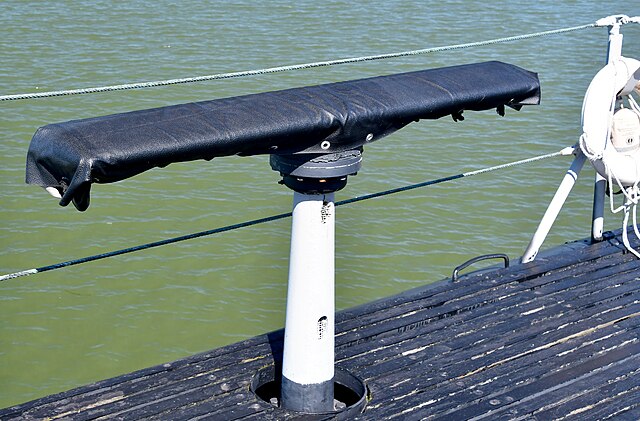
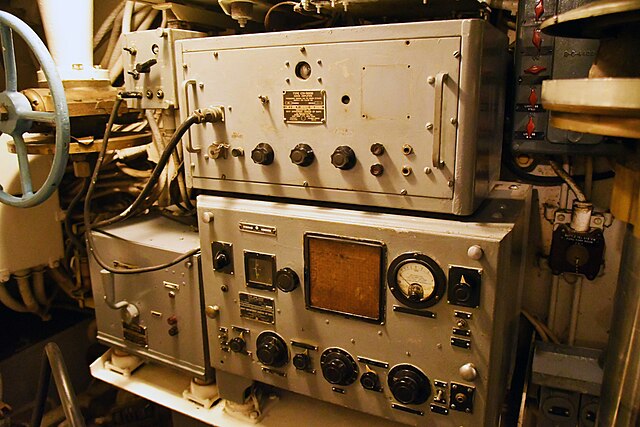
No data so far.
Appearance

USS Tench, HD 1/400 illustration

Balao, Tench, Gato class, HD 1/400 illustrations

Rendition of USS Tirante with MS 32/3SS-b in 1945.
⚙ Tench class specifications (1945) |
|
| Displacement | 1,570 tons surfaced, 2,416–2,429 tons submerged |
| Dimensions | 311 ft 9 in x 27 ft 4 in x 17 ft (95 x 8.3 x 5.2 m) |
| Propulsion | 2x shafts, 4× diesels, 4x HS EM/red. 5,400 shp/2,740 shp |
| Speed | 20.25 knots (38 kph/24 mph) surfaced, 8.75 knots (16 kph/10 mph) submerged |
| Range | 11,000 nautical miles (13,000 mi) surfaced at 10 knots |
| Armament | 10 × 21-in TTs (6 fwd/4 aft, 24), 5-in/25, Bofors 40 mm, Oerlikon 20 mm |
| Sensors | QCC/JK Sonar, SJ radar, see notes |
| Test Depth | 400 ft (120 m) |
| Crew | 10 officers, 71 enlisted men |
Construction
The Tench Class would see a production of 28 boats out of the initially planned 80, with 51 cancellations in late 1944 and 1945. They were distributed among the same yards that alreay produced the Balaos:
Portsmouth Naval Shipyard, Kittery, Maine: Tench, Thornback, Tigrone, Tirante, Trutta, Toro, Torsk, Quillback, Argonaut, Runner, Conger, Cutlass, Diablo, Medregal, Requin, Irex, Sea Leopard, Odax, Sirago, Pomodon, Remora, Sarda, Spinax, Volador, Pompano (cancelled), Grayling (cancelled), Needlefish (same), Sculpin (same) and SS-495 to SS-515 cancelled, never laid down.
Electric Boat Company, Groton, Connecticut: Unicorn, Walrus (SS-436-437) cancelled befome commission, reserve 1946-59.
Mare Island Naval Shipyard, Vallejo, California: SS-516, 517, 518, all Cancelled.
Boston Naval Shipyard, Charlestown, Massachusetts: Amberjack, Grampus, Pickerel, Grenadier, Dorado, Comber, Sea Panther Tiburon, SS-529, SS-537–SS-544 (Cancelled)
29 of were built during and after World War II, commissioned from October 1944 through February 1951. So the earlu boat saw significant wartime action still. 11 were commissioned postwar. None of this class were lost in World War II operations, but some postwar such as Ghazi (ex-Diablo (SS-479)) in Pakistani service on 4 December 1971 (Indo-Pakistani Naval War), in the hands of INS Rajput. Apart these case, they gave good service until the 1990s with some foreign navies, such as a record ROCS Hai Shih, ex-Cutlass, listed “active” still today.
Like the Balaos, the Tench were preferred for postwar modernization programs with sixteen of them modernized under various GUPPY conversion programs and eight more under the more austere “Fleet Snorkel” modernization, leaving only a few (4) never modernized and scrapped after a few years service.
Cancellations: A total of 125 U.S. submarines were cancelled for all two last classes, all but three between 29 July 1944 and 12 August 1945. USS Wahoo (SS-516), USS Unicorn (SS-436), and USS Walrus (SS-437) were however cancelled 7 January 1946. References sometimes got mixed up distinguishing between the Balaos and Tenches. In some, after SS-416 all were Tench class, albeit USS Trumpetfish (SS-425) and USS Tusk (SS-426) were late Balaos. There were ten cancelled Balao-class (SS-353-360 and 379-380) but the Register of Ships did not help by considering all the boats not specifically ordered as a Tench to be a Balao. The SS-551-562 belongd to a “future class” for 62 cancelled Balao class, 51 cancelled Tench class, 12 cancelled SS-551 class. Two cancelled Tench-class boats, Unicorn and Walrus from Eletric Boat whuch skipped that class entirely (all operational boats were from the state yard at Portsmouth) were launched incomplete, never commissioned, listed with the Reserve fleet until struck in 1958. Launched incomplete, were the SS436–437 (Tench), SS491–521 (Tench), SS526-529 (Tench), SS537-550 (Tench), and SS551-562 of the “SS-551 class” based on the official register.
Modifications
Mod 4A:
It seems the Mod 4 was CT was initially planned, but it was modified upon completon to the Mod 4A: Both radar masts (SJ-1 and SV) out of the shears, modified lookout platforms, wind venturi forward of the bridge (with several variants), and the hull modified with upper rows of small circular limber holes (on USS Cero, Dace, Albacore, Scamp first) to accelerate the outer hull filling. Some obtained an APR stub antenna for enemy radar detection forward of the shears. On some also an RDF loop antenna was also installed. On some boats, gun shields were installed on the Mark 10 gun mounts for and aft. There were no “mod 5” but the Tench and Balao received all these mods while in construction. There were also countless variations of the modifications above between ships.
In addition, some boats lost one of their anchors and the hawse hole plated over, some had their their bow planes modified to decrease diving times and modified stowage. The original mine cable cutters installed were retractable and stowed either side of the bow on the upper edge of the superstructure forward of the bow planes, and above the torpedo tube outer doors. They could be mounted if needed, but this was never done. This concerned only early batches, 20 boats total. This equipment was later judged “frivolous” and eliminated altogether.
Read more here (true treasure of info on these changes)
In 1945, USS Requin experimentally recieved a rocker launcher composed of six 6×12 tubes, 127mm or 5 inches Mk 51.
In January SS417 to 424, SS475 to 486 typically had their forward 5-in/25 Mk 40 deck gun, a single 40mm/60 Mk 3 AA gun on the aft CT platform and a single 20mm/70 Mk 10 AA forward, as well as a SD, SJ, ST radars, the WDA and JP sonars as well as the APR-1 ECM suite.
Some were later converted as Migraine class boats (see later).
In September 1946 USS Spinax; was completed, as USS Requin as Migraine class boats, with new radars only usable when surfaced, later converted as fleet snorkels, and then capable of using their radars while cruising underwater .In 1950, USS Requin and Spinax were converted by Migraine II program.
In 1948 USS Tigrone was converted to the Migraine I program.
The Tench class in service
Ten of the 29 Tench-class were completed in time to have se trials, shakedown, training, both at home and in Pacific and at least a single war patrol as they entered service from late 1944 onwards. By that time, targets were few and far between. Another contribution was to rescue downed aviators near Okinawa. The two additional Cutlass and Diablo entered Japanese waters on their first war patrols just on the 13 August 1945 cease-fire. Construction on the last four was suspended, for a completion resumed with many changed in 1948–1951.
Postwar, 24 of the 29 boats were modernized under the GUPPY programs (see later) giving them two three decades of useful service. 1970s. Fourteen were also transferred to foreign navies, with the last one only retired from July 2021, an absolute record (for the ROCS).
Naval Reserve Boats
To maintain a ready pool of trained reservists, the Navy had 58 submarines used from 1946 to 1971 to coastal and inland ports, even Great Lakes ports (Cleveland, Detroit, Chicago) as semi-static training platforms, used only during the Reservists’ weekend drills. Three Tench-class served that way. They were were rendered incapable of diving and their propellers removed to avoid any mishaps, as “pierside trainers”. Their commission but called “in commission in reserve” or decommissioned/recommissioned the same day and only activated the week ends.
Radar Picket Boats

USS Spinax as SSR-489 in 1947
The experience with kamikaze pushed for the adoption of a long range radar detection capabilities for the fleet, in vanguard around its core. At first, radar picket destroyers and destroyer escorts were used for this, but they proved highly vulnerable, with the Fletchers and Sumner for example having the most losses in this use. A submarine on the other hand t do the same job, with an evern greater range, and dive in any sign of trouble. Four were chosen, including the unique USS Remora of the Tench class, as prototype, but the war endedbefore she could be used in this role.
Postwar, the idea was still valid and ten fleet submarines were converted for this in 1946–53, redesignated “SSR” for radar picket submarines. Three Tench-class were chosen, as seen above, USS Requin, Spinax, and Tigrone. The first two under 1946 Project Migraine I and Tigrone under Migraine II (project SCB 12) in 1948, and later the first two converted in turn to this new standard. They received powerful air search and height finding radars on masts, with the entire aft torpedo room converted into an electronics space. Torpedoes and tubes were removed entirely.
However, they proved only marginally successful, more because of the early radars they carried, short range, troublesome and unreliable. With a battle fleet of 30 knots, these subs also could not keep up ahead. The radars were removed, the boats converted back after 1959.
Sonar Test Boats
USS Conger was the only one fitted with the “Bottom Reflection Active Sonar System II” or BRASS II, a powerful experimental sonar installed in 1961. She was redesignated as an auxiliary submarine (AGSS) in 1962. BRASS II was a prototype of sonar sphere, used later on the Thresher class following. USS Conger thus played a vital role for the fate of the US nuclear submarine service.
USS Tigrone, also was transformed. Formerly a radar picket submarine, she became aslo an AGSS and sonar test submarine on 1963–64. Her configuration allowed to test developmental sonar, as a tesbed for the Naval Underwater Sound Laboratory. Forward torpedoes and tubes were removed to install a large upper bow sonar dome with a forward extension of the sail and a side-facing square sonar rack aft of the sail. The bow and sail domes represented the BRASS III sonar evolution.
Replacement: The SS-551 class
In late 1944, the Bureau of Ships (BuShips) spent time with a group of submarine officers, confering with COMSUBPAC Admiral Charles A. Lockwood. They worked on specifications for a more radcal design to completely replaced the Gato/Balao/Tench altogether. Several designs were considered and officers wanted a deeper test depth as well as more torpedo tubes, plus a higher speed. Of course there were inherent limitations and the final design was more realistic, as “Design B”. It started developement in May 1945. Dimensions were radically increased with a full overall lenght from 95 m to 102 m or from 611 to 336 ft making for a 1,960 long tons (1,990 t) surfaced displacement and 2,990 long tons (3,040 t) submerged. Given their large size, larger engines were needed, which were 12-cylinder Fairbanks-Morse using two-stage supercharging. Top speed was improved, whe surfaced, from 20 to 22.5 knots (41.7 km/h; 25.9 mph). Armament went from ten to twelve 21-inch (533 mm) torpedo tubes with six forward, and amazingly, six aft instead of four, all internal, thanks to the generous extra room.
But more so, they innovated by having even extra tubes, this time external like on British subs. These were a new type of short 21-inch (533 mm) external torpedo tubes in the superstructure, capable of firing the newly developed swim-out 19-inch (483 mm) Mark 27 acoustic homing anti-escort torpedo. So they fired without air pressure. The torpedo left the tube by itself. These external tubes had three each firing to port and starboard, so on the sides, making for a full 360° coverage of all angles. Also the test depth that could be reached now was pushed to 500 feet (150 m) thanks to an even increased pressure hull thickness and additional bracing. However in late 1945, amidst many cancellations, the project ended. SS-551 to SS-562 were cancelled as follow-up Tench, but to the new design if authorized. The “real” succession of the wartime Gato class (used there as a generic overall class) was very different almost prototypal serie, the Barracuda and Tang class, very different beasts, much smaller and using the latest in submarine tech, learned from the German Type XXI and elektoboote in general.
The Tench class Postwar: Fleet Snorkel
At the end of the war, the US submarine force comprised an amazing 200+ fleet of submarines that perfectly filled its role, destroying Japan’s empire laines of communication and sunk a great deal of major warships to boot. But before the cold war really started in 1947, the 29 Tench-class submarines were now considered obsolescent despite their very short service, compared to the nex standard showed by the very avant-garde German Type XXI U-boat. The latter was even an “austere” version of the large Walter boats using an ealry form of AIP, and showed that with well streamlined forms and doubling the battery capacity, adding a snorkel, could completely change the way submarines would be used. This clearly was the future. More so in 1947, it was clear the Soviets were now also in possession of the Type XXI and currently producing a design of their own, to be mass-produced.
In this frame, the USN launched the “Greater Underwater Propulsion Power Program” or “GUPPY” conversion program. Not all WW2 boats were used. Only the latter ones, the Balao and Tench class, much improved compared to the Gatos (notably their stronger hull, deeper dive). The goal was to give them similar capabilities to the Type XXI,if practicable. But the cost of upgrading submarines to GUPPY standards, at first seen as a good alternative to order brand new boats, proved still too much for the budget of the time. Thus an austere “Fleet Snorkel” conversion was developed, to keep more submarines updated, just adding a snorkel and partial streamlining of the fin (no longer called a “conning tower”).

USS Pomodon was the prototype GUPPY I boat in 1947.
In all, 16 Tench-class were chosen for convertion fo successive GUPPY configurations, and 8 additional boats became “Fleet Snorkel” instead. USS Diablo was one of the latter, converted prior to transfer to Pakistan. The GUPPies were active into the early 1970s and most were transferred to foreign navies and still active into the 1980s or beyond.
The core of the conversion, whatever the GYUPPY mark was to replace the original Sargo batteries for four more compact Guppy (GUPPY I and II only) or Sargo II batteries. This impose to completel transform the below-deck space, getting rid of the auxiliary diesels to make for extra room. These batteries used lead-acid and the number of battery went from 252 to 504 but they needed to be replaced every 18 months (5 years before). The Sargo II battery was an austere version of the expensive Guppy battery. Snorkel was also installed to run underwater for great distances, and the streamlining concerned mostly the sail and bow. The electric motors were also upgraded to ae direct drive double-armature system, and came with a full modernization of all electrical and air conditioning systems. But also the installation of a new sonar, new fire control, and brand new Electronic Support Measures (ESM).
GUPPY I: USS Odax and Pomodon, 1947.
GUPPY II: USS Remora (SS-487), followed by Amberjack, Cutlass, Grampus, Grenadier, Odax, Pickerel, Pomodon, Remora, Sea Leopard, Sirago, and Volador) and the former GUPPY I in 1951. All had Guppy batteries.
GUPPY IA: USS Tench converted in 1951 with a Sargo II battery.
Fleet Snorkel: USS Argonaut, Diablo, Irex, Medregal, Requin, Runner, Spinax, and Torsk in 1951–52. They kept their original Sargo batteries but had a streamlined sail with their snorkel and upgraded sonar as well air conditioning, and ESM, even retaining their 5-inch/25 caliber deck gun until the mid-1950s.
GUPPY IIA: USS Quillback, Thornback, Tirante, and Trutta in 1952–54.
GUPPY IB: None.
GUPPY III: USS Pickerel, Remora, and Volador in 1959–63 aspart as the Fleet Rehabilitation and Modernization II (FRAM II) program. For the details of all these, check the GUPPY page.

Tench class GUPPY 1B, USS Thornback (SS 418), still with the “split fin”.

USS requin (SS 481) as a Fleet Snorkel, note the GUPPY III style fin. The best giveway was its original pointy prow.
Exports: The Tench class under other flags

Taiwanese Navy ROCS Hai Shih (SS-791)
The large numbers of surplus US submarines was a bonanza through MLDAP, under loan or leasing, to allied navies. 17 Tench-class were transferred after aroughy 25 years of service.
Turkey 2, Greece 1, Italy 1, Pakistan 1, Canada 1, Brazil 4, Venezuela 1, Peru 1, Taiwan 1. The latter was a record-holder. The ex-USS Cutlass was transferred along with the ex USS Tusk (Balao) to the Republic of China Navy, respectively as Hai Shih and Hai Pao in 1973. In 2015 they were still in commission.
USS Argonaut served well with the Royal Canadian Navy from 1968, renamed HMCS Rainbow. She was decommissioned in 1974, returned to the US in 1977.
USS Diablo was leased to the Pakistani Navy in 1963 as PNS Ghazi. She took part in the 1965 and 1971 war with India, sunk in a minelaying mission in the Bay of Bengal, the last Tench-class ever to see action. As for the Taiwanese Hai Shih-class, ex-Tench still around in 2020, their torpedo capacity (28) made them still extremely well armed still for the time.
 USS Tench SS-417
USS Tench SS-417
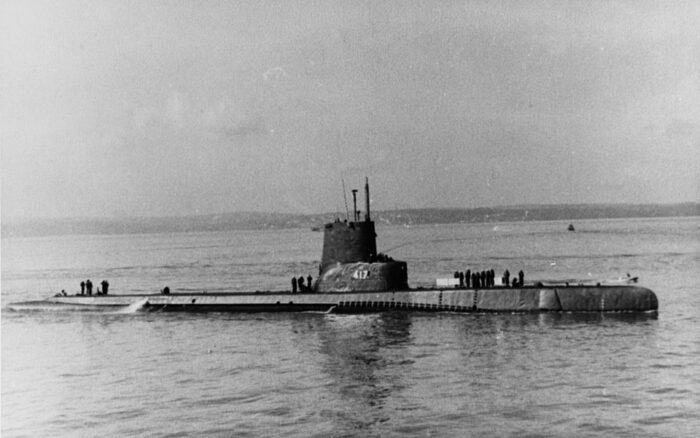
USS Tench was laid down at Portsmouth Naval Shipyard in Kittery, Maine on 1st April 1944, launched 7 July 1944 and completed on 6 October 1944 with Commander William B. “Barney” Sieglaff in command. After trials and shakedown off New London she sailed on 20 December for the Pacific via Key West, Panama and was at Pearl Harbor by January 1945. After local training she departed on 7 February for her first war patrol via Saipan to refuel, in wolf pack with Sea Devil, Balao, and Grouper, underway on 27 February for the East China Sea, southwest of Kyūshū and Yellow Sea. On 6-7 March in Colnett Strait south of Yakushima she started rotated patrols with weather-reporting and photographic-reconnaissance or lifeguard duties. On 18 March she took station off the western coast of Kyūshū and off Nagasaki and investigated an aviator’s dye marker off Akune, in fact a reflection of a shoal spot. But it was too shallow for her to dive, when aircraft surged from astern, in fact 5th bombers back from bombing Nagasaki, witnessing their remaining bombs drops. She found no targets afterwards for torpedoes but blasted floating mines and gunned down 2 trawlers on 28 March. On 3 April she was spotted by a bomber and had to dive. In the evening she spotted a radar-equipped warship escorting a merchantman. She made a hit on the second, which was assumed sank (no confirmation).
Her patrol lasted with the invasion of Iwo Jima and landings on Okinawa in a picket line off Japan as early warning system. She did not detected the Yamato task force on 6 April (it was Threadfin (SS-410)) and the line was disbanded. She on air-sea rescue in the East China Sea and on 8 April, picked up the pilot and radioman from a dive-bomber from Essex (CV-9) and ended in Guam on 14 April.
After a refit she sailed under command of Tom Baskett in May 1945 for her second war patrol to Japanese homeland, Tsugaru Strait (Honshū-Hokkaidō) and northern entrance to the Sea of Japan to interdict Japanese shipping between the Kuril Islands and Tokyo. On 25 May she spotted a warship while surfaced and suddebnly spotted a periscope out of the fog, submerged immediately, picked a sonar ping, evaded. She saw little shipping but motor luggers, picket boats, steam trawlers, and others, all gunned down. On 1 June, she spotted and sank the 861-ton Mikamisan Maru at first near Shirlya. Next she torpedoes the 517-ton Ryujin Maru. She contined barring the strait, dodging patrols and picket boats. On 9 June she spotted the 2857-ton freighter Kamishika Maru, sinking her with several torpedoes and avoiding retaliation. Next day she spotted the 834-ton Shoei Maru 6 but the attack was repelled by the escort. On 11 June she spotted and reclessely engaged a destroyer by night, surfaceed. The salvo was followed by her pulling hard rudder over to turn when ookouts spotted one Mark 14 torpedo from older stocks making a circle back to her. She took evasive action and fortunately the torpedo ran deeper to her stern. She ended her patrol at Midway (4 ships, 5,000 tons, best of her career).
After refit, she departed for a 3rd and final patrol from 29 July, through Colnett Strait, East China Sea and the following day she sank a motor lugger with her Bofors and captured her Korean crew. On 2-4 August, she evaded the East China Sea typhoon, released her prisoners and inspected the harbor on Osei To off Korea and started a shore bombardment, claiming four schooners and severely damaged another, then a sea truck, motor trawler, warehouses and installations. Next she was in the Gulf of Bohai, then Shandong Peninsula and on 9 August while in fog she torpdoed a seagoing tug towing two large barges. She was attacked by a “Betty” 500 yards (460 m) on her port beam. On 15 August, this was over. On station until 28 August she sailed for Guam (2 September), Apra harbor, and sailed for home via Pearl Harbor and Balboa to New London on 6 October 1945, exactly a year after commission. In March 1946 she entered reserve at New London.
USS Tench was awarded three battle stars for her World War II service. Decom. January 1947. GUPPY IA 1951, AGSS from 1 October 1969, used for tests, SS 30 on Jun 1971, struck 15 August 1973, sold to Peru for spares 16 Sep 1976.
 USS Thornback SS-418
USS Thornback SS-418

USS Thornback was laid down on 5 April 1944, launched on 7 Jul 1944 and completed on 13 Oct 1944 under Commander Ernest P. Abrahamson in command. She left New London on 20 March 1945 via Panama to Hawaii, Pearl Harbor on 25 May for Pacific training and started her shakedown on 11 June. But while she was in the Pearl Harbor channel, Landing Craft Infantry (LCIs) on the wrong side of the channel forced her to close to the extreme edge of the channel, scrapped the bottom and destroyed her sound dome (repairs, 2-day) before departing for her 1st patrol for Saipan on 13 June via Guam. She continued to train underway to the Mariana Islands, arrived on 25 June. She entered the wolfpack “Abe’s Abolishers” and departed on 30 June for Japanese home waters. Its merchant marine and Navy was reduced to nil already, targets were rare. She took part in an antipicket boat sweep at Tokyo-Yokohama and on the east coast of Honshū, south of Hokkaidō in rough seas and poor visibility. She spotted a hospital ship on 5 July and 5 days later had to master a minor fire in the pump room. On 15 July, she spotted USS Sea Poacher (SS-406) and 6 days later she proceeded north to Erimo Seki, already devastated by TF 38. On 26 July while at 8,000 yards (7,300 m) off Hei Saki her sonar picked up a Japanese escort ship and fired her stern tubes at 04:29 (explosion) but had “pinging” from new attackers plus a Japanese floatplane so she cleared the area. 3 days later she spotted a 950-ton “sea truck” like Sanko Maru but lost her in misty weather. Later she fired five and missed, then three more, missed and surfaced to gun her down from 300 yards (270 m) with the main and Bofors but she escaped, damaged in the fog.
While off Hokkaidō on 31 July she spotted many Japanese patrol craft and surfaced, gunned down a 100-foot (30 m) patrol boat at 500 yards (460 m). On 31 July, USS Thornback met Sea Poacher off Kesennuma and later met USS Angler (SS-240) for a shore bombardment of Hokkaidō. On 1 August, they shelled Urakawa, in a perfect line, unmolested, parallel to the beach at 10 knots, even using the Bofors from 4,200 yards (3,800 m). They noted a factory and power plant destroyed over 22 minutes. She then sailed for Midway, arrived on 8 August. 7 days later while resupplying and the crew in R&R, the war was over. Back to the US she was decommissioned on 6 April 1946 and was converted as a Guppy IIA in 1953. Transferred to Turkey as Uluçalireis 1 Jul 1971. Struck and sold to Turkey 1 Aug 1973. Decommissioned 7 August 2000, memorial at the Rahmi M. Koç Museum in Istanbul, Turkey.
 USS Tigrone SS-419
USS Tigrone SS-419
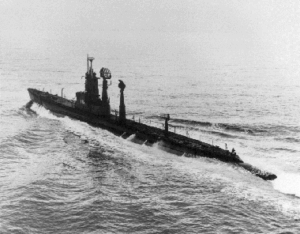 USS Tigrone was laid down 8 May 1944, launched on 20 Jul 1944 and completed on 25 Oct 1944. On 9 March, she departed Oahu for Guam on 19 March, had repair on one engine, and departed on 21 March with USS Bullhead and Blackfish under Commander Hiram Cassedy, later joined by USS Seahorse, for the South China Sea in a scouting lin to catch shipping. Tigrone on 29 March dove to avoid fire from an Army “Oscar”. At 60 ft (18 m), there was a small explosion over the forward battery compartment (concussion of a small bomb). Later she failed to intercept a convoy spotted by US planes. On 3 April she was in lifeguard duties off the eastern shore of Hainan. On 5 April she evaded an unidentified plane. On 8 April, she was on lifeguard station off Kuannan. Suddenly a torpedo wake was spotted at 500 yards (500 m) on port bow (assumed enemy submarine) so she swung left, the torpedo passed her abeam 60 yards (50 m) away. She submerged, rigged for silent running, and searched with her sonar for two hours.
USS Tigrone was laid down 8 May 1944, launched on 20 Jul 1944 and completed on 25 Oct 1944. On 9 March, she departed Oahu for Guam on 19 March, had repair on one engine, and departed on 21 March with USS Bullhead and Blackfish under Commander Hiram Cassedy, later joined by USS Seahorse, for the South China Sea in a scouting lin to catch shipping. Tigrone on 29 March dove to avoid fire from an Army “Oscar”. At 60 ft (18 m), there was a small explosion over the forward battery compartment (concussion of a small bomb). Later she failed to intercept a convoy spotted by US planes. On 3 April she was in lifeguard duties off the eastern shore of Hainan. On 5 April she evaded an unidentified plane. On 8 April, she was on lifeguard station off Kuannan. Suddenly a torpedo wake was spotted at 500 yards (500 m) on port bow (assumed enemy submarine) so she swung left, the torpedo passed her abeam 60 yards (50 m) away. She submerged, rigged for silent running, and searched with her sonar for two hours.
On 9 April, she was in lifeguard station off Mofu Point and patrolled off Hainan until 15 April and departed, bombarded Pratas Reef. On 16 April she joined USS Rock to fire on targets at Batan Island and sail back to Guam on 24 April 1945.
After refitting by submarine tender Apollo she left on 19 May and arrived on 25 May (2nd patrol), to Sofu Gan Island and Tori Shima, then took lifeguard station south of Honshū, west of the Nanpō Islands and rescued a downed flier. On 27 May, she engaged a Japanese lugger surfaced, which fired back and injuring 3 gunners. She sank her and returned to lifeguard station. On 28 May, she rendezvoused with a Navy bombe in distress, ditched 500 yards (500 m) from her, so she quickly rescued five survivors. She later responded to frequent calls for aid, rescued 23 men in the Philippine Sea. On 24 May, she assisted a damaged PBY Catalina herself in a rescue operation and took 16 survivors. On 30 May, she surfaced and rescued more men in 30 ft (9 m) waves. She was congratulated back home, setting a new record for lifeguard proficiency. On 1 June she stopped at Iwo Jima to disembark her passengers but had radar problems, and issues with fog so she returned to lifeguard duty, notably south of Honshū, joining the “Lifeguard League”. On 26 June and up to 28 June rescued more men and ended her patrol on 3 July at Apra Harbor.
After refitting at the sub tender USS Proteus, she departed on 31 July for her 3rd patrol via Saipan to load torpedoes, again on lifeguard station. While 100 miles (160 km) of Honshū she learned Soviet Union declared war on Japan. She spotted many Japanese search planes. On 11 August, in patrol she closed to 50 miles (80 km) of the shore of Sagami Wan and on 13 August, bombarded Mikomoto Island, destroying a radio station and the lighthouse tower. On 14 August she rescued another aviator and on 15 August it was over. She had orders to cease all attacks but patrolled off the east coast of Japan to Sendai and Todo Saki and on 30 August, met “Benny’s Peacemakers” and moored in Tokyo Bay, departed Tokyo on 2 September via Hawaii and Panama for New London in October. She was decommissioned on 30 March 1946, SSR 5 Apr 1948, SS 1 Mar 1961, AGSS (sonar test boat) 1 Dec. 1963; struck 27 Jun 1975, sunk as target 25 Oct 1976.
 USS Tirante SS-420
USS Tirante SS-420
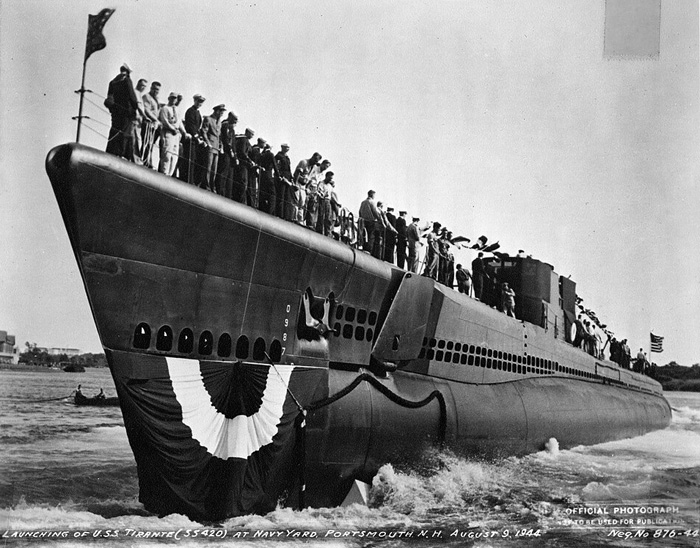
USS Tirante was laid down as SS-420, laid down on 28 Apr 1944 launched on 9 Aug 1944 and completed on 6 Nov. 1944 under Lieutenant Commander George L. Street III in command.
After shakedown training in Long Island Sound, Panama and Oahu, she sailed for her firt patrol for Japanese home waters on 3 March 1945, notably approaches to Nagasaki. She sank the 703-ton tanker Fuji Maru on the 25th, then the 1218-ton freighter Nase Maru on the 28th. On the 31th she sank a 70-ton lugger by gunfire. On 1 April she missed an LST with torpedoes. Next she swapped for the south coast of Korea and Tsushima. On 6 April she captured a small Japanese fishing vessel and on the 7th, torpedoed a 2800-ton freighter full of oil drums, and later directed a nearby Korean fishing craft to pick up survivors (unconfirmed). On 9 April, vectored in by US intel, she sank the troopship 5,058-ton Nikko Maru, killing 668, also unconfirmed postwar.
Next she was in the Yellow Sea between Cheju Do and the mouth of the Yangtze and was vectored in onather convoy at Cheju, Quelpart Island. By night she entered the mine-obstructed port under ten-fathom and found 2 escort vessels and the 4000-ton Juzan Maru. The latter was torpedoed but that alerted the Mikura-class “Nomi” and Type C “CD-31”. Tirante fled at flank speed, launching torpedoes hitting both, and made good her escape to Midway Island on 26 April, captured en route two Japanese airmen. Commander Street was awarded the Medal of Honor and XO Lieutenant Edward L. Beach, the Navy Cross while the crew collectively was awarded a Presidential Unit Citation. This was rare at this stage in the war.
The second and third war patrols started from Midway Island on 20 May. Tirante was now command ship of a nine-boat “wolfpack”, called “Street’s Sweepers”. It was the largest wolfpack ever organized so far. They patrolled the Yellow Sea, East China Sea, combing far apart for enemy targets. Tirante located a 4-ship convoy on 11 June off Nagasaki, evaded 3 escorts and torpedoed a 800-ton cargo freighter (not confirmed).
On the 12th, she made it by night into Ha Shima harbor, 7 miles (11 km) from Nagasaki. There she torpedoed the 2200-ton Hakuju Maru from 1,000 yards (900 m) and cleared the area.
Like her sisters in the wolfpack she also gunned down numerous junks from Korea to Japan and sent barding parties, captured a dozen and destroyed two heavily armed picket boats. She was back to Guam on 19 July and departed on 12 August for her last war patrol, learning about the end three days later. She was back in Midway Island on 23 August and sailed for the US east coast entered Washington Navy Yard in October. Commander Street received his Medal of Honor at a White House ceremony. Tirante late was moved to Staten Island in New York and later New London, on 8 January 1946 for training operations and decommissioned, reserve on 20 Jul 1946. Reactivated on 26 Nov 1952 but converted as a GuPPY IIA in 1953. Struck 1 Oct 1973, sold for scrap 21 Mar 1974.
 USS Trutta SS-421
USS Trutta SS-421
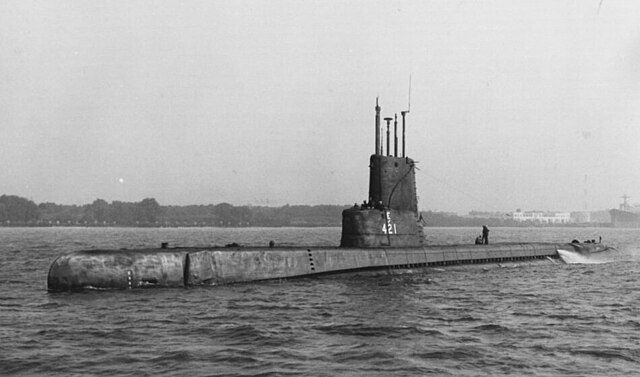
USS Trutta was laid down on 22 May 1944, launched on 18 Aug 1944 and completed on 16 Nov 1944 with Arthur C. Smith in command. After outfitting and shakedown, she had a month of intensive training between Portsmouth and New London before heading for the Pacific, via Panama, arrived at Pearl Harbor on 25 February, followed by advanced training, and she departed with a wolfpack, USS Parche (SS-384) and Lionfish (SS-298) under Trutta’s direction, proceeded to Saipan on 30 March.
On the 31st, they left Tanapag Harbor but while leaving she struck a cable connected to an oil drum adrift in the charted channel and needed repair to her propeller blades. She departed again on 3 April and on the 7th was vectored in to intercept a Japanese naval force from the Bungo Suido, headed by IJN Yamato to Okinawa. But the latter changed course and she missed them. Yamato would be savaged by TF 38. On 9 April Trutta crossed Nansei Shoto, avoided aircraft and through gale-force winds, in force 5 seas she arrived in the East China Sea on 11 April. She patrolled on the Shanghai-Quelpart Island lanes, and 13 April, trailed three Japanese destroyers, but passed through an uncharted minefield. Next while in to Daito Wan, western Korea on 18 April, she sank a small freighter by gunfire, damaged another. Off the China coast on 22 April she was attacked by a float plane, one bomb exploded very close as she was diving.
After midnight on the 25th, she was patrolling west of Quelpart Island when her lookouts spotted a torpedo pass astern. She turned parallel to its wake, saw another on her port side but cold not locate the IJN sub. On 26 April she headed for Guam, and the next day between Akuseki Shima and Takara Shima (northern Ryukyus) she was straddled by a Japanese plane. Low on air and battery power she managed to surface and resplenish at noon. She arrived at Guam on 4 May.
After refit, R&R and exercises with USS South Dakota (BB-57), Trutta sailed on 2 June with USS Queenfish (SS-393), weathering a typhoon an was sent on lifeguard station on 7 June. She rescued a downed Army aviator stranded for a week. She was then posted south of Kyushu, patrolled off Bungo Suido, and amde photo reconnaissance of Tori Shima. On 21 June, she departed Bungo Suido to join the wolfpack “Street’s Sweepers” in the Yellow and East China Seas. She fired diversionary rounds on Hiradoshima and patrolled the southwest coast of Korea. On 1 July after following a sailing vessel, she spotted and entire fleet of schooners, surfaced at the right spot to prevent them to flee and sank seven of these over 4-hour, with boarding actions.
On 6 July south of Daito Wan, she she spotted a tug towing three schooners, sank all by gunfire. On 12 July she left for the Marianas, arrived at Guam on the 18th for a refit by USS Fulton (AS-11), and departed for her last patorl on 12 August when receiving word of the peace negotiations. She arrived at Midway on 24 August and via via Pearl Harbor and Panama, via New Orleans and arrived at New London in January 1946, 6th Fleet, reporting for inactivation. Decom. on March 1946, Recom. on 1 Mar 1951 and until 14 May 1952. Converted GUPYY IIA 1953, recom. 2 Jan. 1953. Struck and sold to Turkey as “Cerbe” on 1 Jul 1972, decommissioned 23 Jul 1999, sold for scrap.
 USS Toro SS-422
USS Toro SS-422

Toro was laid down on 27 May 1944, launched on 23 August 1944 and completed on 8 December. After training off Portsmouth and Newport, New London, Key West, on 11 February 1945 she served wit the Fleet Sonar School but on the 28th, she left for the Pacific with USS Bumper (SS-333) via Panama (more intensive trainingà, then Hawaii (1 April 1945) for local training exercises with SubDiv 101 and on the 24th she departed with USS Billfish (SS-286) for Saipan (6 May) and on patrol from 10 May in lifeguard south of Shikoku, east of Kyūshū.
On 18 May, she detected a transmission from a Japanese submarine, attempted to close but found none. Next she was in Bungo Suido in lifeguard duties as well as Omino Shima and on 25 May, was sent to find a B-29 Superfortress in trouble, later rescuing two Army aviators and later another. Next she had a radar contact and soon a torpedo wake crossed her bow but never saw its attacker. She was back at Bungo Suido until 14 June and left for Apra Harbor, Guam for resupplying at the tender Fulton (AS-11).
She departed for a second and last patrol on 14 July via Saipan to refuel, take water, replaceme her torpedoes with Mark 18 electric ones. She arrived south of Shikoku on 24 July. Later she made radar contact with a US task force at 20:55, was mistook for an anemey and chased by USS Colahan (DD-658) which opened gunfire, nearly hitting her at her first salvo from 7,400 yards and after she crash-dived after sending a flare, smoke bombs, and making a sonar recce signal, she was rigged for depth charges. Colahan wroted in her logs she sunk a Japanese picket boat and search for survivors. 25 July, Toro surfaced and sailed for her lifeguard station, rescued three British aviators and on 30 July, received a distress message from a P-51 and rescued the aviator, later transferred to USS Gabilan (SS-252) on 1 August.
On 5 August she spotted black smoke on the horizon and investigated, picked up another Army aviator when a second jumped from his plane nearby. On the 15th she learned Japan capitulated, destroy some naval mines south of Honshū, and on the 17th proceeded via Guam to Midway and on 4 September, left for Pearl Harbor, Panama Canal and Philadelphia to be inactivated. Toro was decommissioned on 2 Feb. 1946. Reactivated on 13 May 1947. She became AGSS 1 July 1962 (auxiliary hull for test) from 11 March 1963 until struck 1 Apr 1963, sold for scrap April 1965.
 USS Torsk SS-423
USS Torsk SS-423

Torsk was laid down on 7 June 1944, launched on 6 Sep 1944 an completed on 16 December. After training until 11 February she sailed for Port Everglades for ASW experiments and departed on 20 February via Panama for Hawaii (23 March) followed bu further further training and prepped up for her first patrol via Guam and to Kii Suido on 11 May. She was in SAR duties for air crews as part of the spring raids on Japan and 12 May, proceeded to the northeastern coast of Honshu, trying later to contact a wolfpack in the area, and met USS Sand Lance and Cero on the 27th. No targets found but a Japanese coastal minelayer on 2 June between Honshu and Hokkaido. Six torpedoes, all evaded. On the 4th, she spotted a 700 long tons (710 t) freighter off Kobe Saki, sent four but missed. She headed for Midway Atoll, arrived on 11 June, then Pearl Harbor on 16 June for a refit. Her second patrol started on 17 July via Guam, on 1-2 August, and to the Sea of Japan. On 10 August she passed the minefields in the Tsushima Strait, and capatured seven Japanese sailors from sunken Koue Maru. On the 12th off Dogo Island she sank a small freighter by torpedo. Off Ando Saki on 13 August she surfaced and sank small fishing boats but later missed another cargo vessel in Wakasa Wan.
On 14 August, she spotted a cargo ship with a 745 long tons (757 t) Kaibōkan type escort vessel off Amarube Saki and launched a single experimental Mark 28 torpedo (acoustic homing) which struck the escort, blew a hole in her stern so she sank. She missed howeber the freighter. Later she spotted a second Kaibōkan, fired a second Mark 28 torpedo and dove deep to 400 feet (120 m). From there, she launched another experimental Mark 27 torpedo (passive acoustic) torpedo and the hydrophone operator detected a large explosion (The Mark 28 hit home) followed by the Mark 27 a minute later. This was the last Japanese warship to be sunk in World War II, with a surrender the next day. Torsk later surfaced by night and proceeded toward the Noto Peninsula, patrolling the Sea of Japan and in surveillance of Japanese installations, destroying naval mines and on 1 September, she proceeded for the Marianas via the Tsushima Strait, Guam on 9 September. Later via Pearl she headed home to be placed in decommisson and reserve.
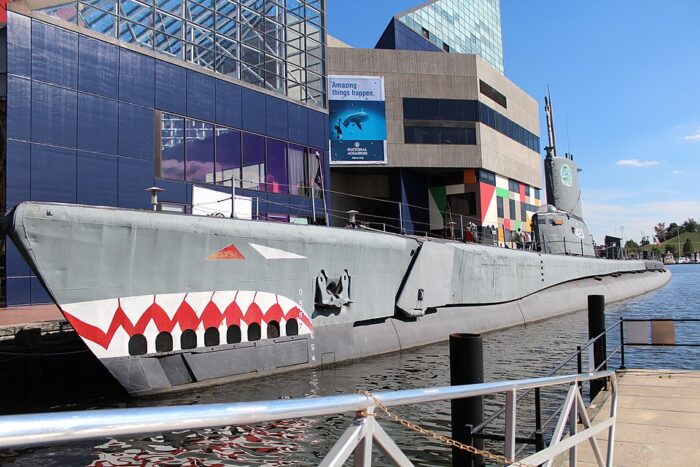
Converted as a Fleet Snorkel in 1952. She was decommissioned on 4 March 1968, briefly a memorial in Baltimore, Maryland, then she became AGSS (auxiliary) on 1 May 1968, Pierside Trainer in 1968-1971, IXSS (unclassified) on 30 Jun 1971 until stricken on 15 December, BU. Memorial since then at Baltimore, highlight of the Historic Ships collection.
 USS Quillback SS-424
USS Quillback SS-424
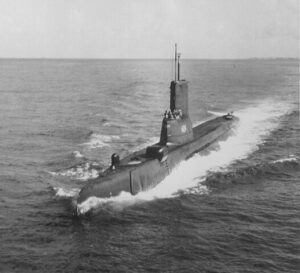 USS Quillback was laid down on 27 Jun 1944, launched on 1 Oct 1944, completed on 29 December.
USS Quillback was laid down on 27 Jun 1944, launched on 1 Oct 1944, completed on 29 December.
After training at New London, Connecticut, and work on an experimental ordnance project at Key West, Florida, Quillback departed for Pearl Harbor and her maiden war patrol, off the coast of Kyūshū. During this patrol, from 30 May to 24 July 1945, she destroyed a Japanese suicide motorboat and rescued one aviator from the water only a half mile from the heavily armed shore. Surrender of the enemy found Quillback refitting for her second patrol at Guam.
Training activities
Peacetime duties returned Quillback to New London for duty as a unit of Submarine Squadron 2. From 1945 to 1951, she operated with the Submarine School.
She was decommissioned on April 1952, converted as GUPPY IIA and recommissioned on 27 Feb 1953. Decom. 23 March 1973, struck, sold for scrap 21 March 1974.
 USS Corsair SS-435
USS Corsair SS-435
USS Corsair was one of the rare Tench class built at Electric Boat in Groton, Connecticut, laid down on 1 March 1945 but construction suspended in September. She was launched after construction resumed on 3 May 1946, completed on 8 November, active until 1 February 1963 (in betweeh she became an auxiliary on 1 April 1960). She was stricken on 1 Febuary 1963, sold for scrap on 21 October.
 USS Unicorn SS-436
USS Unicorn SS-436
USS Unicorn was the second Electric boat Tench class, laid down on 21 June 1945, construction suspended, then cancelled 7 Jan 1946, then reactivated until suspended again on 30 January 1946, reinstated on 26 Feb 1946, accepted but never commissioned, on 3 September 1946. She was placed in the reserve fleet until struck on 9 June 1958, and sold for scrap 10 July 1959.
 USS Walrus SS-437
USS Walrus SS-437
USS Walrus was laid down on 20 September 1946, cancelled on 7 January 1946, suspended on 30 January but reinstated on 26 Febuary and like USS Unicorn, accepted not under commissioned on 2 October in her state, placed in the reserve fleet until struck on 9 June 1958 and sold for scrap on 7 Oct 1959.
 USS Argonaut SS-475
USS Argonaut SS-475

USS Argonaut as she originally appeared, seen at the Panama Canal Zone during training in May 1945.
USS Argonaut was part of the second batch of Portsmouth Naval Shipyard boats, laid down at Kittery, Maine on 28 June 1944, launched on 1st Oct. 1944 and completed on 15 January 1945 with Lieutenant Commander John S. Schmidt in command.
Argonaut held shakedown in the Portsmouth area and in Narragansett Bay and returned briefly to Portsmouth on 27 March for post-shakedown availability. She then sailed on 14 April for Key West, Florida, where she conducted special tests for lighter-than-air craft and training operations with the Fleet Sound School. Argonaut departed the Florida coast on 13 May to transit the Panama Canal en route Hawaii. Reaching Pearl Harbor on 11 June, the submarine spent two weeks in repairs and training exercises before beginning her first war patrol on 28 June.
She made a fuel stop at Saipan on 10 July and then proceeded to the Formosa Strait and the East China and Yellow Seas to search for enemy shipping. On 16 July, Argonaut spotted a downed aviator, picked him up, and later transferred him to Quillback. Her only contact with Japanese vessels during the patrol came on 12 August, when Argonaut sank a 25-ton junk with fire from her 40 mm and 20 mm guns, her only combat action. She terminated her patrol at Guam on 21 August, six days after Japan capitulated, ending World War II.
She became a Fleet Snorkel from 1952. On 2 December, 1968 she was struck and sold to Canada as HCMS Rainbow. She was decommissioned on 31 Decmber 1974 and sold for scrap 24 March 1977.
 USS Runner SS-476
USS Runner SS-476
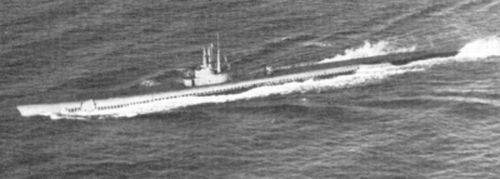
USS Runner was laid down on 10 July 1944, launched on 17 October 1944, completed on 6 February 1945. During her launch she had been sponsored by Mrs. R. H. Bass, the wife of the prospective commanding officer. After shakedown and preliminary training off the United States East Coast, Runner departed New London, Connecticut, on 5 April 1945, conducted intensive training at Key West, Florida, and Balboa, Panama Canal Zone, and arrived at Pearl Harbor, Hawaii, on 21 May 1945. Her first war patrol of World War II was off the east coast of Honshū, Japan, where her primary mission was to scout for the presence of defensive minefields guarding the Japanese Home Islands. On 10 July 1945, while on patrol in the Sea of Japan, she intercepted two worthwhile Japanese targets, a tanker and a minesweeper. The tanker and her two escorts escaped the spread of torpedoes Runner fired at them, but three of Runner’s torpedoes splintered the minesweeper W-27. Before departing station, Runner took aboard 16 downed aviators from the submarines USS Gabilan (SS-252) and USS Aspro (SS-309) for transfer to Guam, where Runner concluded her patrol with her arrival on 24 July 1945.
Runner′s second war patrol began a week prior to the Japanese capitulation on 15 August 1945, and by the time she arrived on station off the east coast of Honshū, peace had come. Runner, with ten other U.S. Navy submarines, entered Tokyo Bay on 31 August 1945 and represented the U.S. Navy submarine service at the formal surrender ceremonies on 2 September 1945.
She became a fleet snorkel in 1952, AGSS (auxiliary) on 1 February 1969, Pierside Trainer in 1970-1971, decommissioned on 29 June 1970, unclassified (IXSS) on 30 June 1971 then struck on 15 December 1971, sold for scrap 19 June 1973.
 USS Conger SS-477
USS Conger SS-477
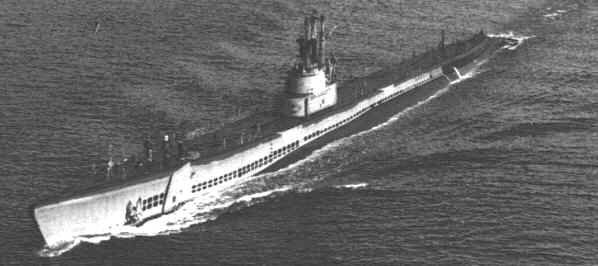
USS Conger was laid down on 11 July 1944, launched on 17 October and completed on 14 Febuary 1945. She tested new submarine equipment at New London until leaving on 21 July 1945 for the via Balboa, Panama, and Pearl Harbor but learned about the end of hostilities, and was ordered back to Panama. On 4 September, she entered at Key West, for tests and trials with the Fleet Sonar School until 6 December. She became an auxiliary (AGSS) from 9 March 1962, decommissioned on 29 July 1963, struck on 1 August, then sold for scrap on 9 July 1964.
 USS Cutlass SS-478
USS Cutlass SS-478
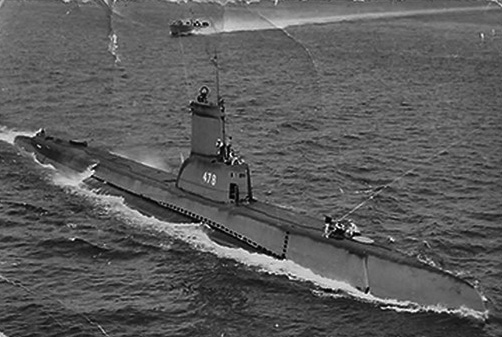
USS Cutlass was laid down on 22 July 1944, launched on 5 November and completed on 17 March 1945 with Herbert L. Jukes in command. She left Portsmouth, New Hampshire on 25 April 1945 for Pearl Harbor (15 July) and started her maiden war patrol on the 17th, patrolling in the vicinity of the Kurile Islands, but she arrived a day after the announced Japanese surrender. She remained on observation patrol until 24 August andreturned to Pearl Harbor, then sailed on 2 September for New York (24 September) and was opened to visitors through Navy Day. Postwar, she was converted as a GUPPY II in 1948, active until struck and sold to Taiwan as “Hai Shih” on 12 April 1973, reportedly still in service in 2020 as training boat.
 USS Diablo SS-479
USS Diablo SS-479
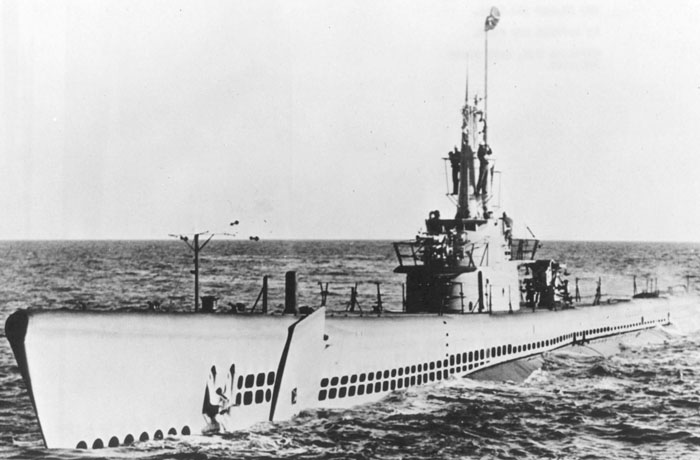
USS Diablo was laid down on 11 August 1944, launched on 1 December 1944, completed on 31 March 1945 under Lt Cdr G. G. Matherson in command. She left New London and arrived via Panama at Pearl Harbor on 21 July and stated her first war patrol on 10 August via Saipan. As there was a cease fire 5 days later, her destination was changed to Guam, and she arrived on the 22th. She headed for Pearl Harbor and the east coast, New York (11 October) and apart a visit to Charleston in October, she remained at New York until 8 January 1946. From 15 January 1946 to 27 April 1949 she was based in the Canal Zone for fleet exercises. Her ccold war career will be the subject of a later update.
Postwar, she became an auxiliary (AGSS) on 19 July 1962, fleet snorkel from 1964 until struck and transferred to Pakistan as “Ghazi” on 1st June 1964, sank by INS Rajput on 4 December 1971.
 USS Medregal SS-480
USS Medregal SS-480
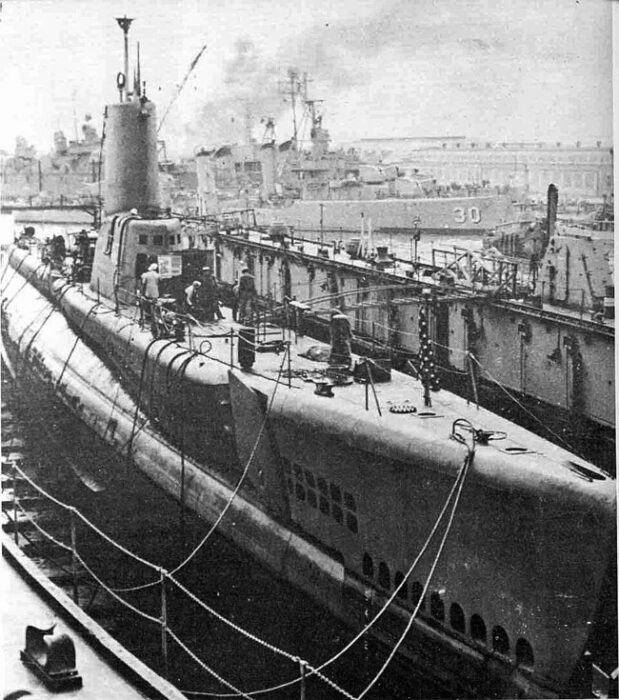
USS Medregal was laid down on 21 August 1944, launched on 15 December 1944 and completed on 14 April 1945. She departed Portsmouth in April but a collision with a U.S. destroyer escort off the north coast of Panama while submerged saw her having her shears and radar towrned off, so she needed repairs at Portsmouth as Germany surrendered. After repairs she was also modified for Air/Sea Rescue for her new SAR role. She departed New London on 16 June, but was underway to Pearl Harbour when learning about the surrender of Japan and she had to return to the Canal Zone, and Key West in Florida, for operations with Submarine Squadron 4. She was attached to this until until mid-1957. Fleet Snorkel from 1952, AGSS (auxiliary) from 1st May 1967, SS (attack sub) from 1st October 1969 until stricken on 1 August 1970, and sold for scrap on 13 June 1972.
 USS Requin SS-481
USS Requin SS-481
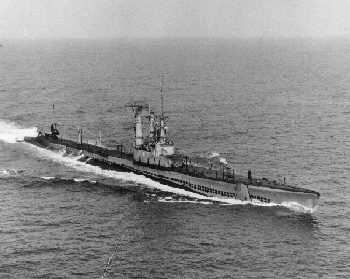 USS Requin was laid down on 24 August 1944, launched on 1 January 1945, completed on 28 April 1945 with Commander Slade D. Cutter in command. She carried a heavier armament than usual in part due to Commander Cutter insisted upon it, as one of the most decorated submarine commanding officers going to sea. She had indeed two 5-inch/25 deck guns (fore and aft), two Bofors 40mm, and two experimental submarine-based 24-tube 5-inch (127 mm) rocket launchers, to bombard Japan as part of Operation Downfall, on Kyūshū for Operation Olympic and Honshū for Operation Coronet.
USS Requin was laid down on 24 August 1944, launched on 1 January 1945, completed on 28 April 1945 with Commander Slade D. Cutter in command. She carried a heavier armament than usual in part due to Commander Cutter insisted upon it, as one of the most decorated submarine commanding officers going to sea. She had indeed two 5-inch/25 deck guns (fore and aft), two Bofors 40mm, and two experimental submarine-based 24-tube 5-inch (127 mm) rocket launchers, to bombard Japan as part of Operation Downfall, on Kyūshū for Operation Olympic and Honshū for Operation Coronet.
After shakedown off New England coast, Requin departed Portsmouth on 3 June for Hawaii, passed Panama on 13 July and on 1st August was in Pearl Harbor and still training two weeks, about to depart for a first war patrol wehn Japan surrendered. She was recalled to the Atlantic, Staten Island, New York, on 18 September. She became a target for sonar school ships and later at Key West joined Submarine Squadron 4 (SubRon 4). She was based at Portsmouth. Converted as Radar picket in 1946, redesignated SSR 20 January 1948, SS (attack sub) on 15 August 1959, then auxiliary (AGSS) on 29 June 1968, decommissioned on 2 Dec 1968. Pierside Trainer for naval reserves in 1969-1971, IXSS (unclassified) on 30 June 1971 and struck on 20 December, but turned into a memorial in Pittsburgh, still there.
 USS Irex SS-482
USS Irex SS-482

USS Irex was laid down on 2 October 1944, launched on 26 January 1945 and completed on 14 May 1945. She became the Prototype Fleet Snorkel for the class in 1947. Reclassified as auxiliary, AGSS on 30 June 1969. Struck on 17 November 1969, and sold for scrap 13 September 1971.
 USS Sea Leopard SS-483
USS Sea Leopard SS-483
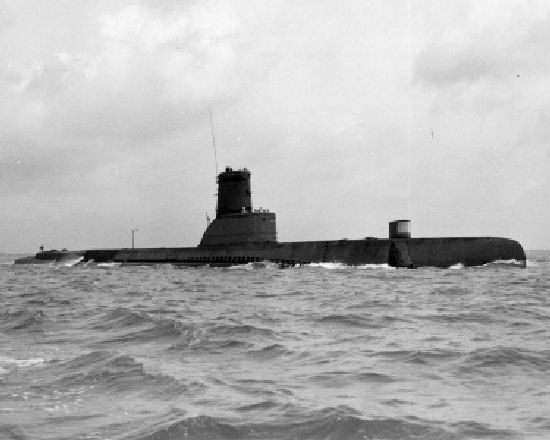
USS Sea Leopard was laid down on 7 November 1944, launched on 2 March 1945 and completed on 11 June 1945. She was converted as a GUPPY II in 1949. Active until struck and sold to Brazil as “Bahia” on 27 March 1973. Very long service, notably as a training boat. Decommissioned and scrapped in 1998.
 USS Odax SS-484
USS Odax SS-484
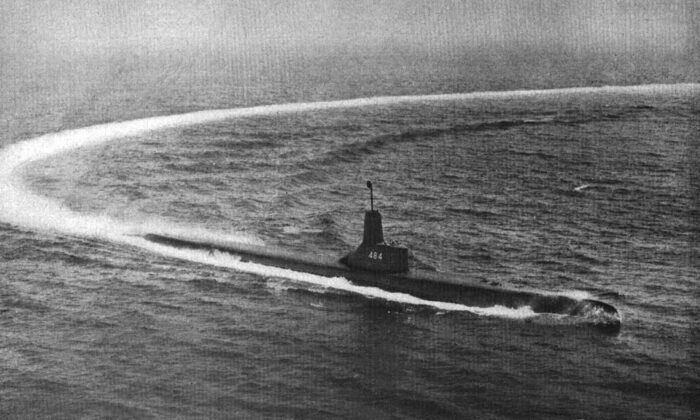
USS Odax was laid down on 4 December 1944, launched on 10 April 1945 and completed on 11 July 1945. Converted as a GUPPY I in 1947, then as a GUPPY II in 1951. Active until struck and sold to Brazil as “Rio de Janeiro” on 8 July 1972. Decommissioned on 16 November 1978, and sold for scrap on 18 June 1981.
 USS Sirago SS-485
USS Sirago SS-485
![]()
USS Sirago was laid down on 3 January 1945, launched on 11 May 1945 and completed on 13 August 1945. Converted as a GUPPY II in 1949. Active until struck on 1 June 1972, sold for scrap on 2 May 1973.
 USS Pomodon SS-486
USS Pomodon SS-486
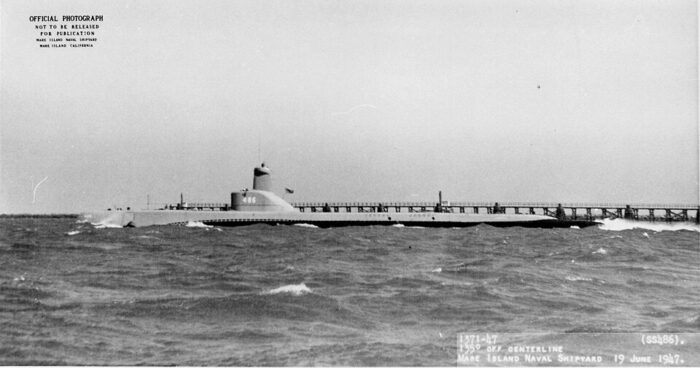
USS Pomodon was laid down on 29 January 1945, launched on 12 June 1945 and completed on 11 September 1945. She was converted as a GUPPY I in 1947 and GUPPY II in 1951, active from 1st April, until 2 July 1955, struck on 1st August 1970, sold for scrap 26 January 1972.
 USS Remora SS-487
USS Remora SS-487
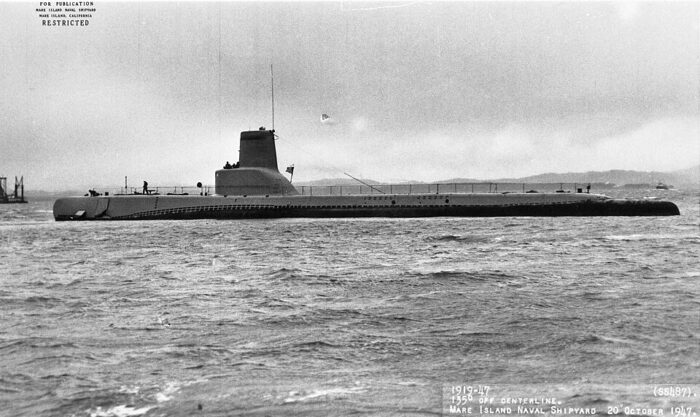
USS Remora was laid down on 5 March 1945, launched on 12 July 1945, completed on 3 January 1946. She was converted as a GUPPY II in 1947 then as a GUPPY III in 1962, active until 29 October 1973, struck and sold to Greece as “Katsonis”, active in the Hellenic navy until decommissioned on 30 March 1993, and sold for scrap afterwards. Note: She could have been saved and preserved as a museum.
 USS Sarda SS-488
USS Sarda SS-488
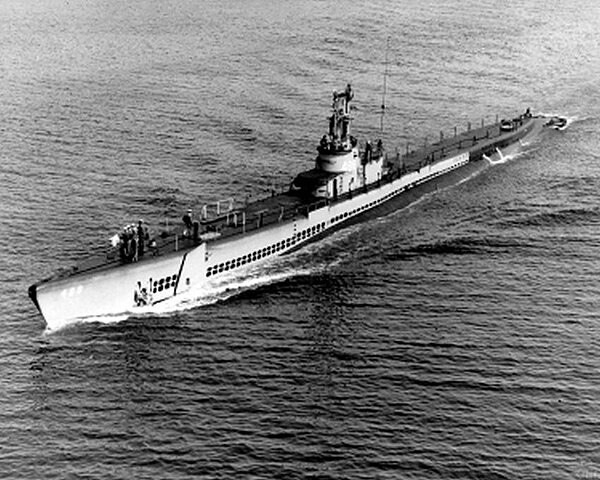
Sarda was laid down on 12 April 1945, launched on 24 August 1945 aand completed on 19 April 1946. She became an auxiliary hull AGSS on 19 July 1962 until struck on 1 June 1964, sold for scrap on 14 May 1965.
 USS Spinax SS-489
USS Spinax SS-489
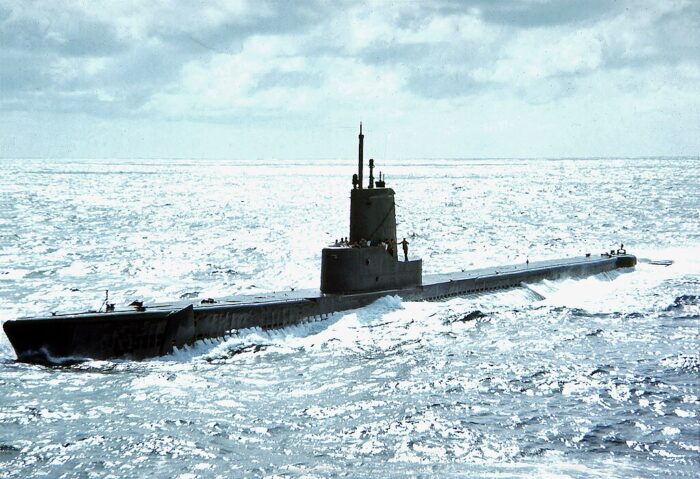
USS Spinax was laid down on 14 May 1945, launched on 20 November, commissioned on 20 Sep 1946. She was completed as a radar picket, redesignated SSR 20 on January 1948. She was converted back as an attack sub, SS 15 on August 1959, then auxiliary, AGSS on 30 June 1969, struck 11 October 1969. She was sold for scrap on 13 June 1972.
 USS Volador SS-490
USS Volador SS-490
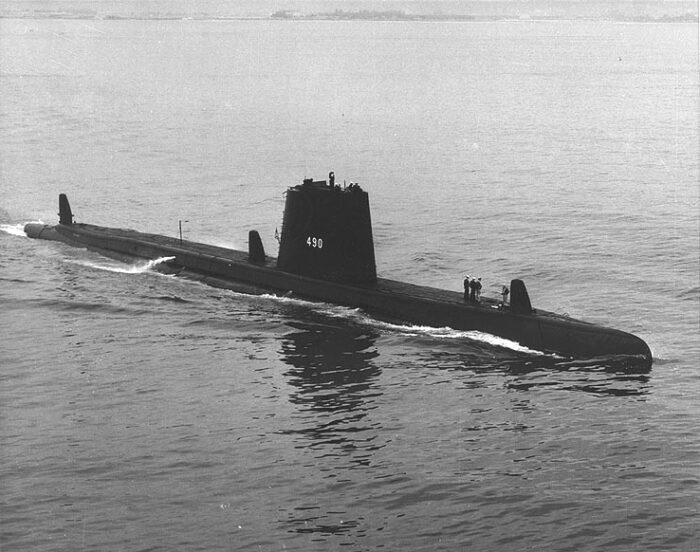
USS Volador was laid down on 15 June 1945, construction suspended on 30 January 1946, completed as GUPPY II on 21 May 1948, commissioned 1st October 1948. Converted as a GUPPY III in 1963. Active until 18 August 1972, then struck and transferred to Italy as “Gianfranco Gazzana Priaroggia”. Sold on 5 December 1977, used until decommissioned and struck on 31 May 1981, fate unknown.
 USS Amberjack SS-522
USS Amberjack SS-522
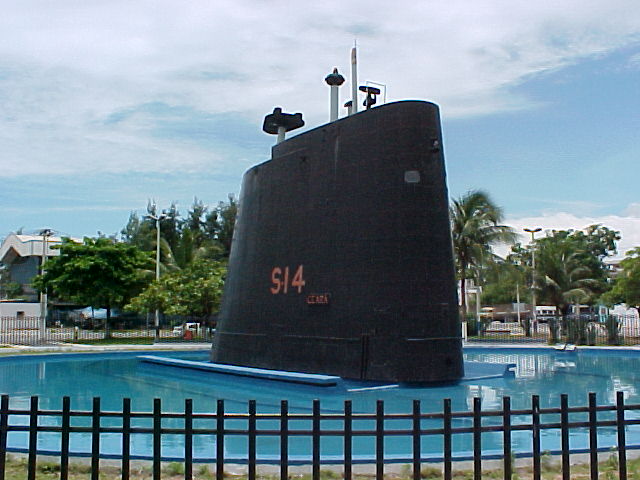
USS Amberjack was laid down at Boston Naval Shipyard in Charlestown, Massachusetts, one of four late war Tench boats. She was laid down on 8 February 1944, launched on 15 December 1944 and completed on 4 March 1946. Converted as a GUPPY II 1947. Active until 17 October 1973, struck, sold to Brazil as “Ceará”, fate unknown but her sail was preserved at Fortaleza.
 USS Grampus SS-523
USS Grampus SS-523
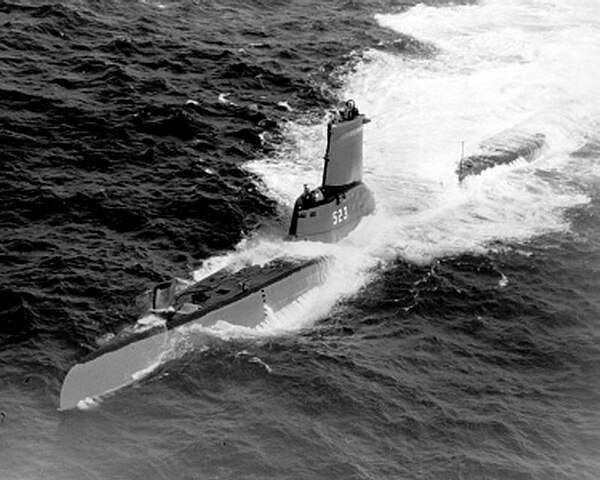
USS Grampus was laid down at Boston but saw her construction suspended on 17 January 1946. She was completed as a GUPPY II on 26 October 1949, active until 13 May 1972. Struck and sold to Brazil as “Rio Grande do Sul” and decommissioned, sold for scrap on 18 June 1981.
 USS Pickerel SS-524
USS Pickerel SS-524
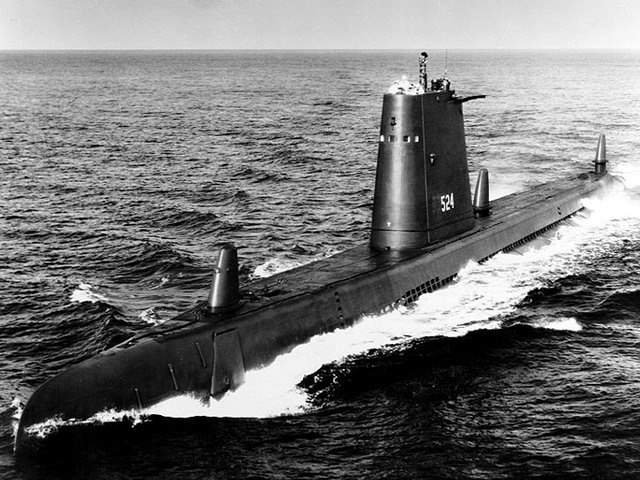
USS Pickerel was laid down at Boston but saw her construction suspended on 17 January 1946. She was decommissioned on 4 April 1949. Completed as GUPPy II on 18 August 1952, then converted as a GUPPY III in 1962. Struck and transferred to Italy as “Primo Longobordo” on 18 August 1972 loaned under MDAP, then sold to Italy on 5 December 1977. Decommissioned by Italy on 31 January 1980, and sold for scrap on 31 May 1981.
 USS Grenadier SS-525
USS Grenadier SS-525

USS Grenadier was laid down at Boston on 10 Febuary 1951, launched on 15 May 1973. Construction Suspended on 17 January 1946, completed as GUPPY II until struck, sold to Venezuela as “Picua” on 15 May 1973. Active until decommissioned by Venezuela on 16 November 1978, struck 1 January 1980, sold for scrap 18 June 1981.
Sources:
Books
Bauer, K. Jack; Roberts, Stephen S. (1991). Register of Ships of the U.S. Navy, 1775-1990: Major Combatants. Westport, Connecticut: Greenwood Press.
Blair, Clay Jr. (2001). Silent Victory: The U.S. Submarine War Against Japan. Naval Institute Press.
Friedman, Norman (1995). U.S. Submarines through 1945: An Illustrated Design History. Annapolis, Maryland: United States Naval Institute.
Friedman, Norman (1994). U.S. Submarines since 1945: An Illustrated Design History. Annapolis, Maryland: United States Naval Institute.
Alden, John D., Commander (U.S. Navy Ret) (1979). The Fleet Submarine in the U.S. Navy: A Design and Construction History. NIP
Bauer, K. Jack; Roberts, Stephen S. (1991). Register of Ships of the U.S. Navy, 1775–1990: Major Combatants. Greenwood Press.
Blair, Clay Jr. (2001). Silent Victory: The U.S. Submarine War Against Japan. Naval Institute Press.
Fluckey, Eugene B. (1992). Thunder Below: The USS Barb Revolutionizes Submarine Warfare in World War II. University of Illinois Press.
Friedman, Norman (1995). U.S. Submarines Through 1945: An Illustrated Design History. Annapolis, Maryland: United States Naval Institute.
Friedman, Norman (1994). U.S. Submarines Since 1945: An Illustrated Design History. Annapolis, Maryland: United States Naval Institute.
Gardiner, Robert; Chesneau, Roger (1980). Conway’s All the World’s Fighting Ships 1922–1946. Conway Maritime Press.
Hutchinson, Robert (2001). Jane’s submarines : war beneath the waves from 1776 to the present day. London: HarperCollins.
Johnston, David L. (2024). “A Visual Guide to the U.S. Fleet Submarines Part Four: Gato Class (With a Tambor/Gar Class Postscript) 1941–1945” (PDF).
McFarlane, Suzanne (23 August 2017). “Tunny I (SS-282)”. Dictionary of American Naval Fighting Ships. Navy Department, Naval History and Heritage Command.
O’Kane, Richard (1987). Wahoo – The Patrols of America’s Most Famous WWII Submarine. Presidio Press.
Roscoe, Theodore (1949). United States Submarine Operations in World War II. Naval Institute Press.
Silverstone, Paul H. (1989) [1965]. U.S. Warships of World War II. Annapolis, MD: Naval Institute Press.
Links
navypedia.org tench.htm
shipcamouflage.com/tench_class.htm
en.wikipedia.org/ Tench-class_submarine
en.wikipedia.org List_of_Tench-class_submarines
Videos
3D
Models Kits
Many kits, full list on scalemates
on sdmodelmakers.com/


 Latest Facebook Entry -
Latest Facebook Entry -  X(Tweeter) Naval Encyclopedia's deck archive
X(Tweeter) Naval Encyclopedia's deck archive Instagram (@navalencyc)
Instagram (@navalencyc)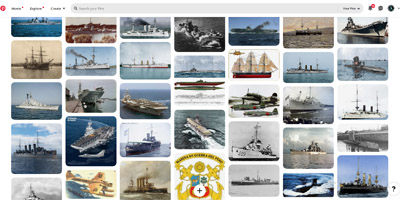

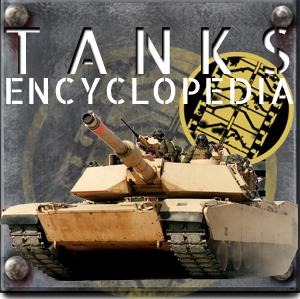
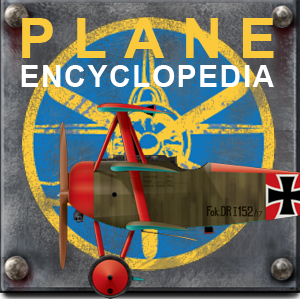
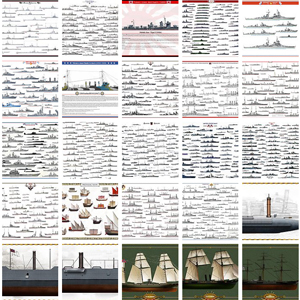
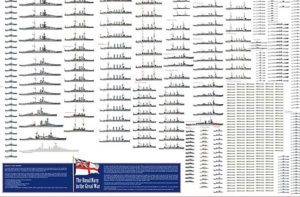
 French Navy
French Navy Royal Navy
Royal Navy Russian Navy
Russian Navy Armada Espanola
Armada Espanola Austrian Navy
Austrian Navy K.u.K. Kriegsmarine
K.u.K. Kriegsmarine Dansk Marine
Dansk Marine Nautiko Hellenon
Nautiko Hellenon Koninklije Marine 1870
Koninklije Marine 1870 Marinha do Brasil
Marinha do Brasil Osmanlı Donanması
Osmanlı Donanması Marina Do Peru
Marina Do Peru Marinha do Portugal
Marinha do Portugal Regia Marina 1870
Regia Marina 1870 Nihhon Kaigun 1870
Nihhon Kaigun 1870 Preußische Marine 1870
Preußische Marine 1870 Russkiy Flot 1870
Russkiy Flot 1870 Svenska marinen
Svenska marinen Søværnet
Søværnet Union Navy
Union Navy Confederate Navy
Confederate Navy Armada de Argentina
Armada de Argentina Imperial Chinese Navy
Imperial Chinese Navy Marinha do Portugal
Marinha do Portugal Mexico
Mexico Kaiserliche Marine
Kaiserliche Marine 1898 US Navy
1898 US Navy Sovietskiy Flot
Sovietskiy Flot Royal Canadian Navy
Royal Canadian Navy Royal Australian Navy
Royal Australian Navy RNZN Fleet
RNZN Fleet Chinese Navy 1937
Chinese Navy 1937 Kriegsmarine
Kriegsmarine Chilean Navy
Chilean Navy Danish Navy
Danish Navy Finnish Navy
Finnish Navy Hellenic Navy
Hellenic Navy Polish Navy
Polish Navy Romanian Navy
Romanian Navy Turkish Navy
Turkish Navy Royal Yugoslav Navy
Royal Yugoslav Navy Royal Thai Navy
Royal Thai Navy Minor Navies
Minor Navies Albania
Albania Austria
Austria Belgium
Belgium Columbia
Columbia Costa Rica
Costa Rica Cuba
Cuba Czechoslovakia
Czechoslovakia Dominican Republic
Dominican Republic Haiti
Haiti Hungary
Hungary Honduras
Honduras Estonia
Estonia Iceland
Iceland Eire
Eire Equador
Equador Iran
Iran Iraq
Iraq Latvia
Latvia Liberia
Liberia Lithuania
Lithuania Mandchukuo
Mandchukuo Morocco
Morocco Nicaragua
Nicaragua Persia
Persia San Salvador
San Salvador Sarawak
Sarawak Uruguay
Uruguay Venezuela
Venezuela Zanzibar
Zanzibar Warsaw Pact Navies
Warsaw Pact Navies Bulgaria
Bulgaria Hungary
Hungary

 Bundesmarine
Bundesmarine Dutch Navy
Dutch Navy Hellenic Navy
Hellenic Navy Marina Militare
Marina Militare Yugoslav Navy
Yugoslav Navy Chinese Navy
Chinese Navy Indian Navy
Indian Navy Indonesian Navy
Indonesian Navy JMSDF
JMSDF North Korean Navy
North Korean Navy Pakistani Navy
Pakistani Navy Philippines Navy
Philippines Navy ROKN
ROKN Rep. of Singapore Navy
Rep. of Singapore Navy Taiwanese Navy
Taiwanese Navy IDF Navy
IDF Navy Saudi Navy
Saudi Navy Royal New Zealand Navy
Royal New Zealand Navy Egyptian Navy
Egyptian Navy South African Navy
South African Navy






























 Ukrainian Navy
Ukrainian Navy dbodesign
dbodesign